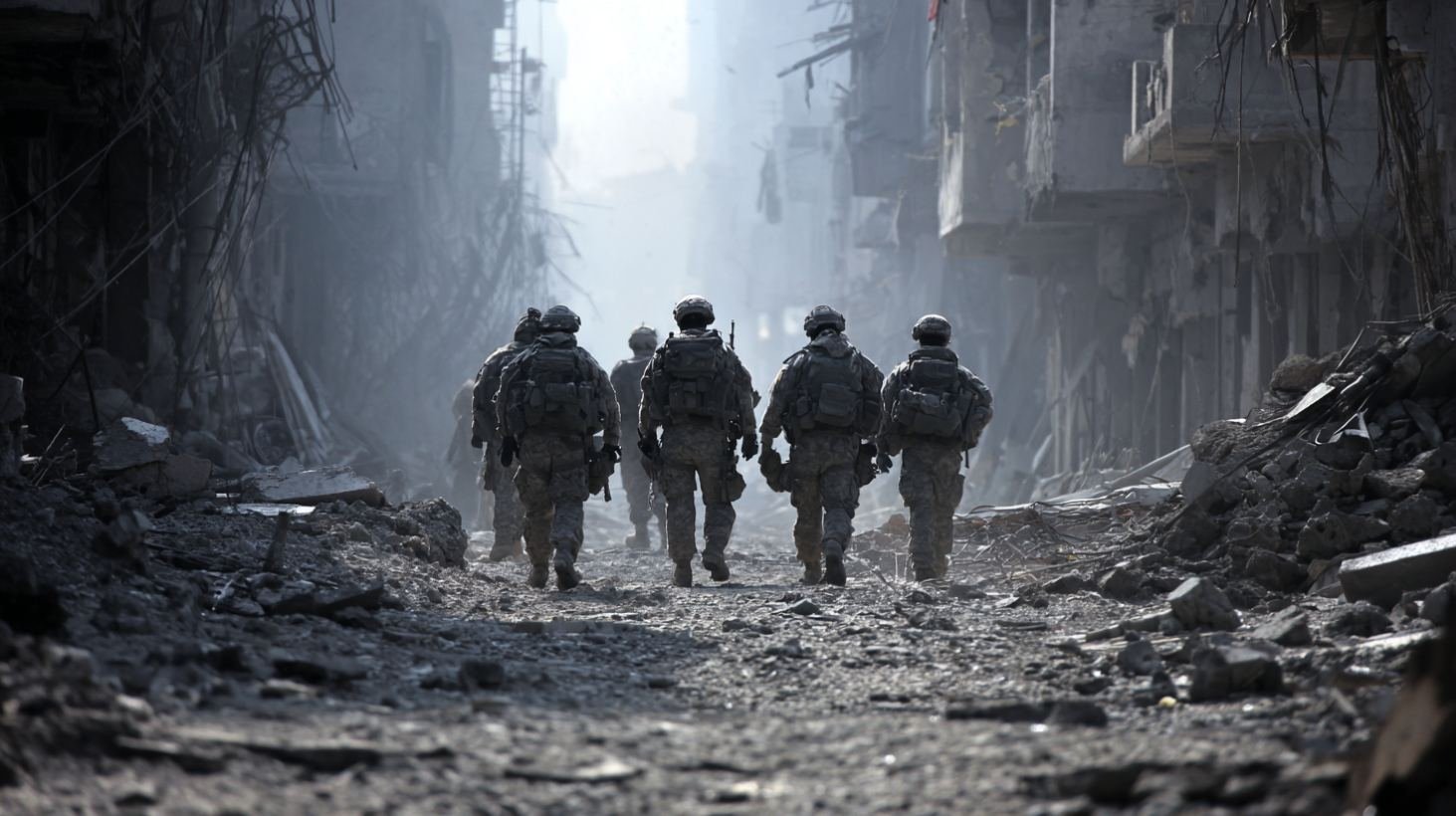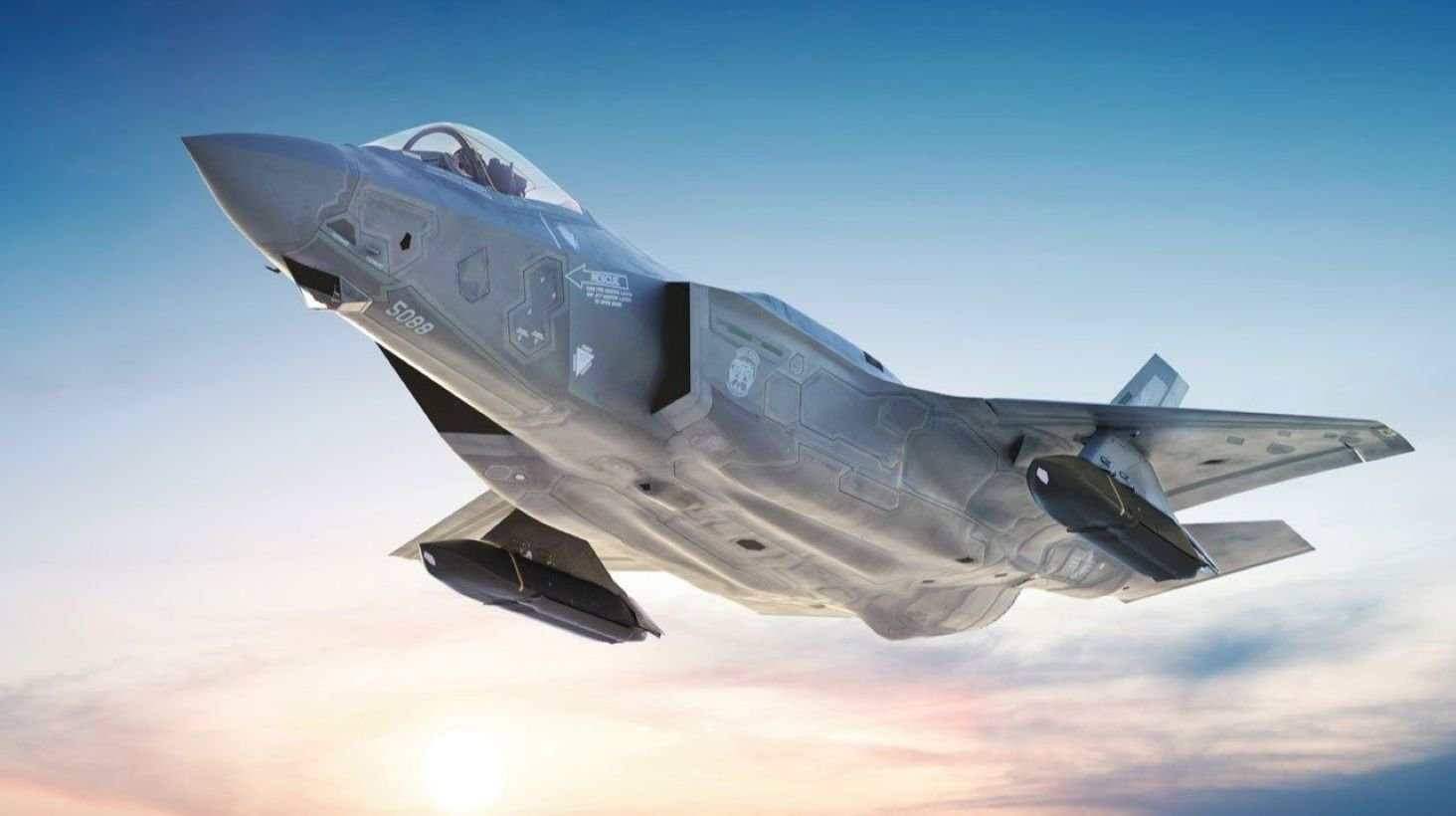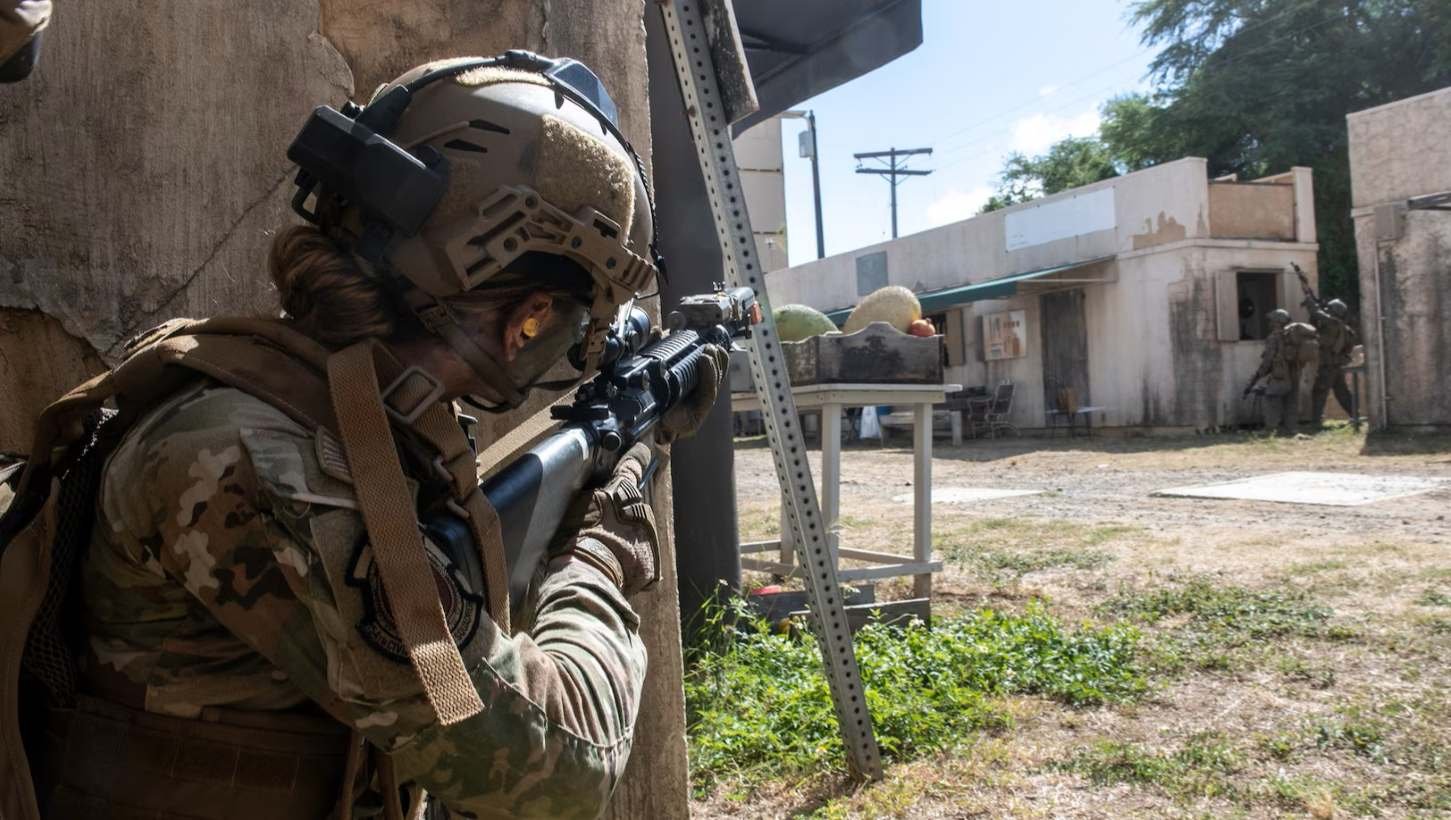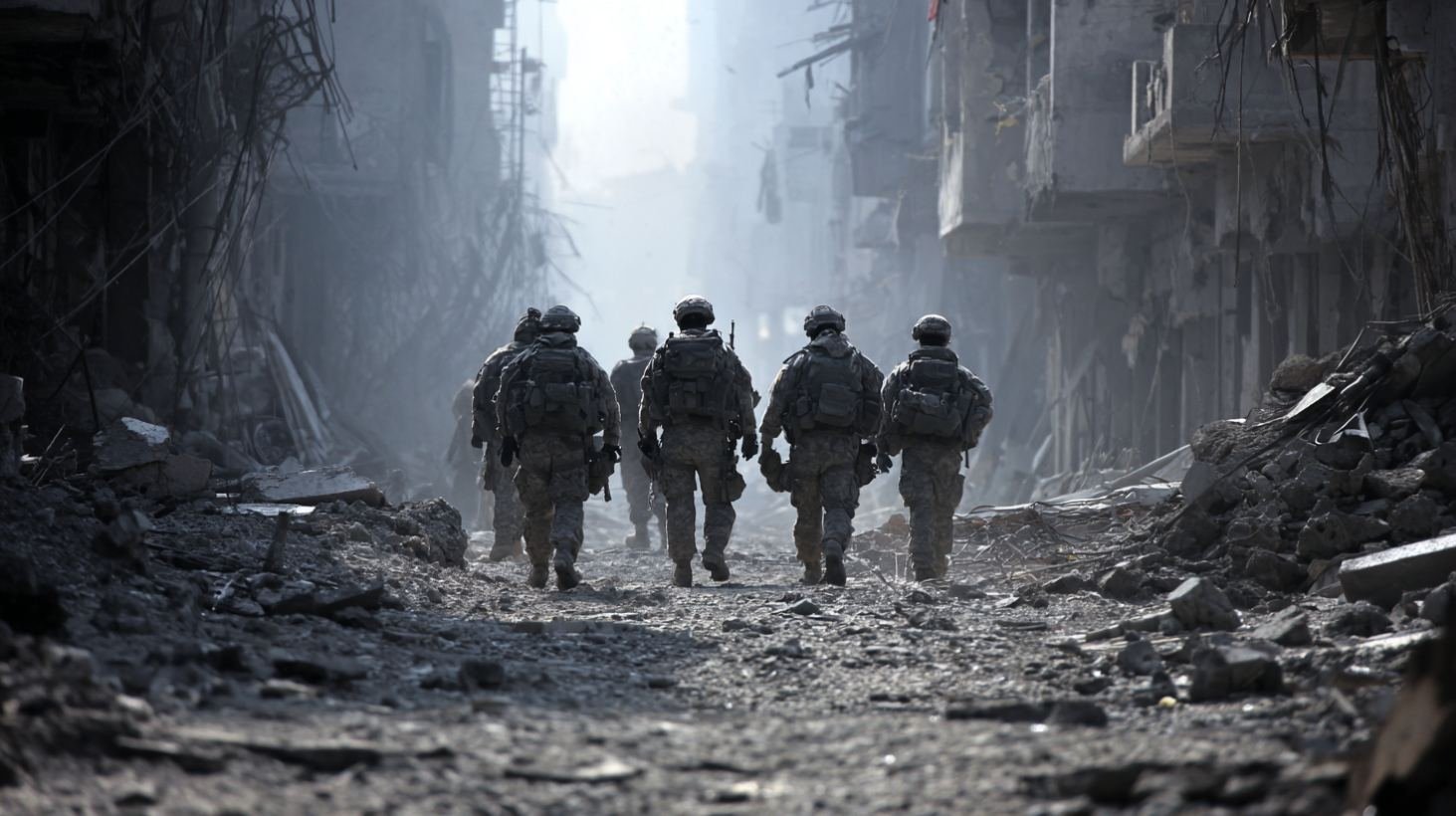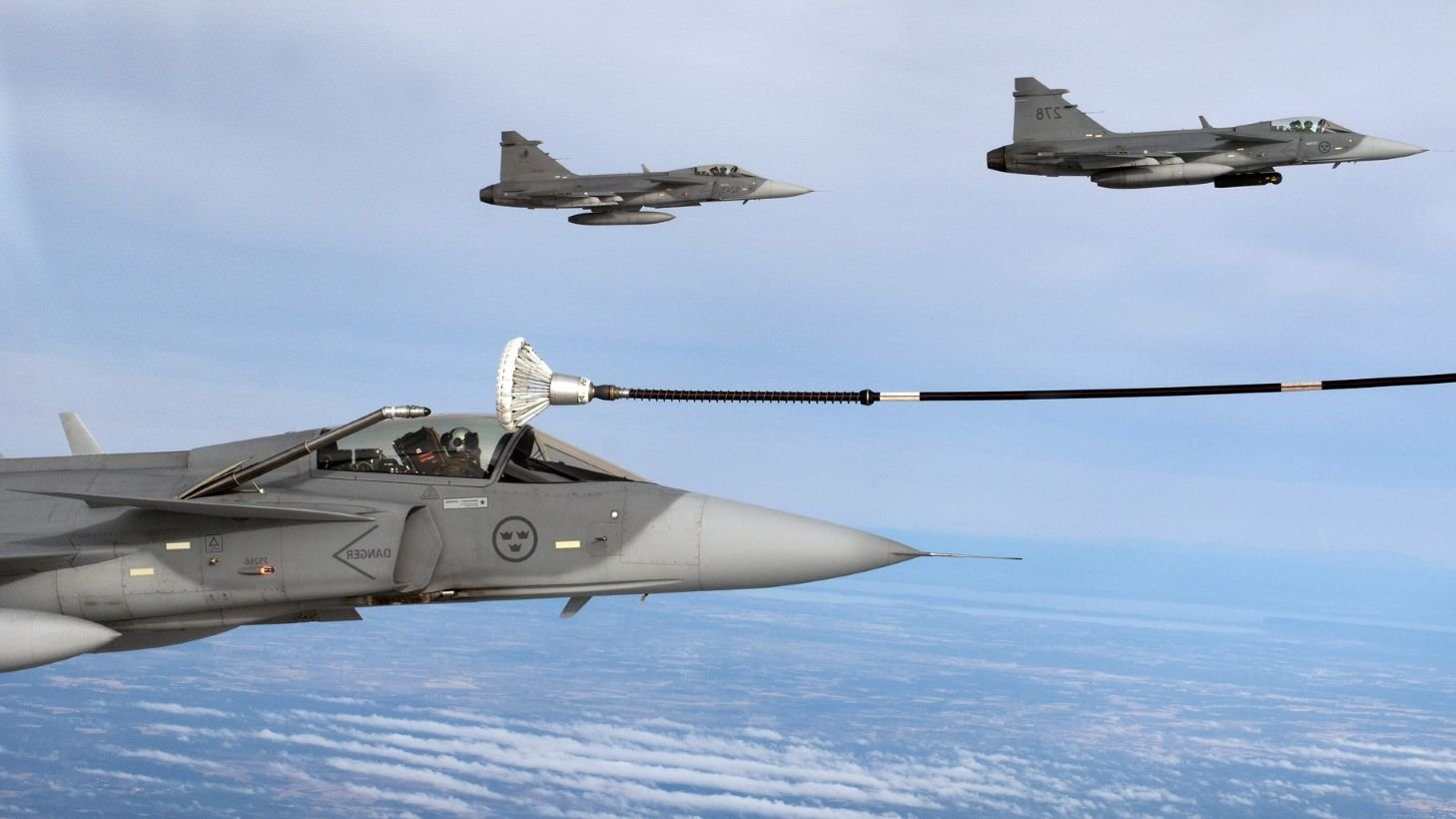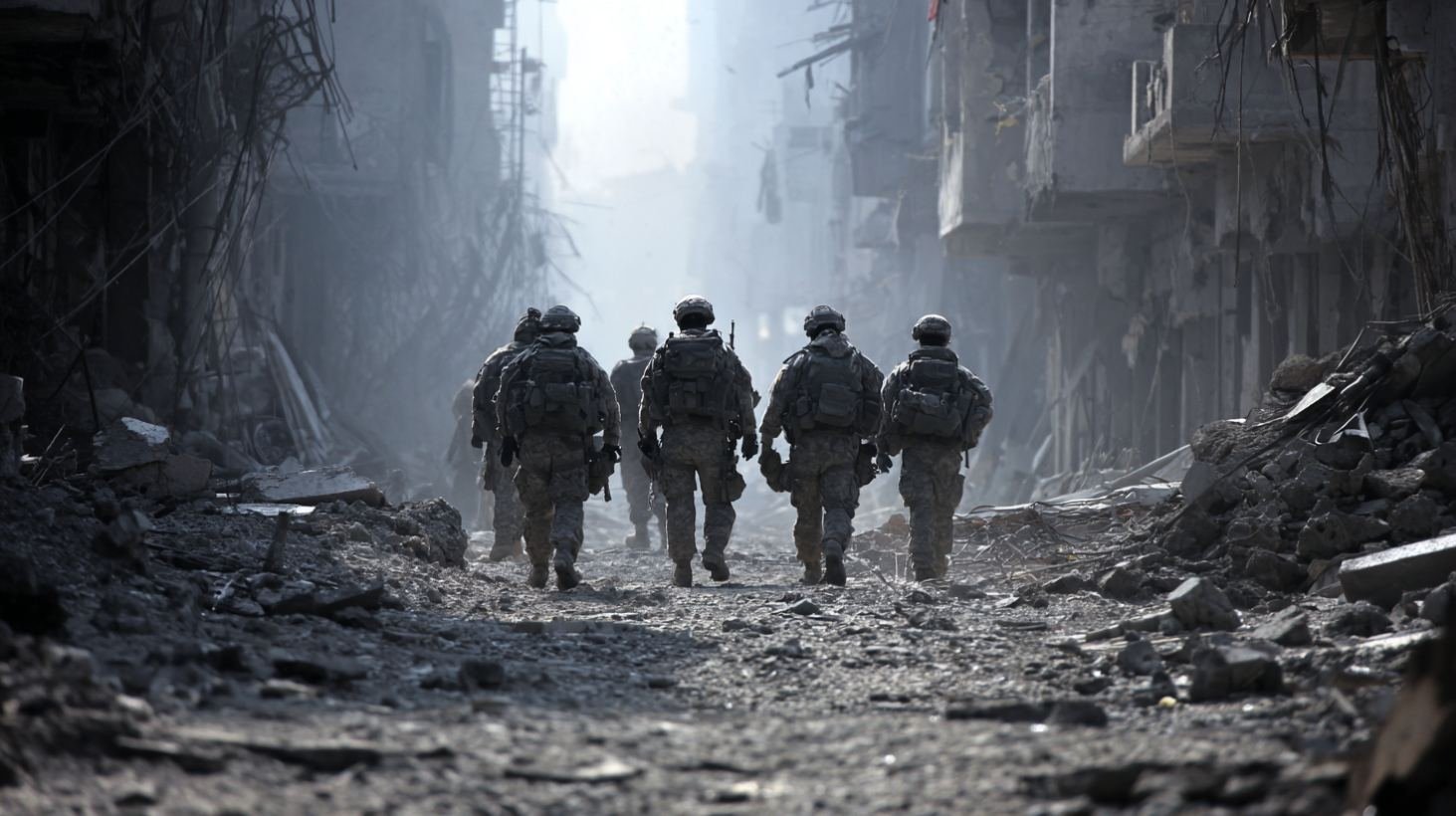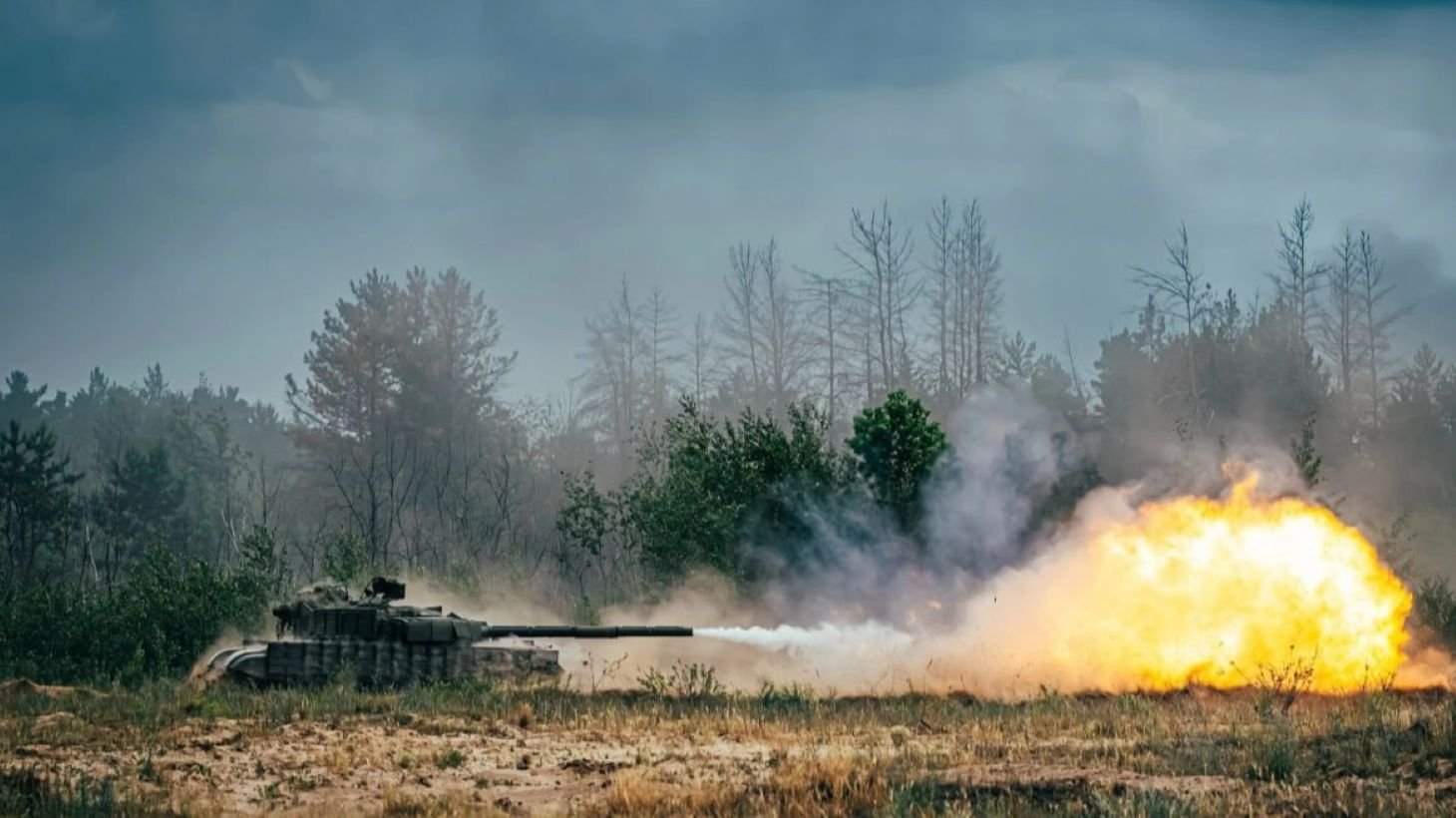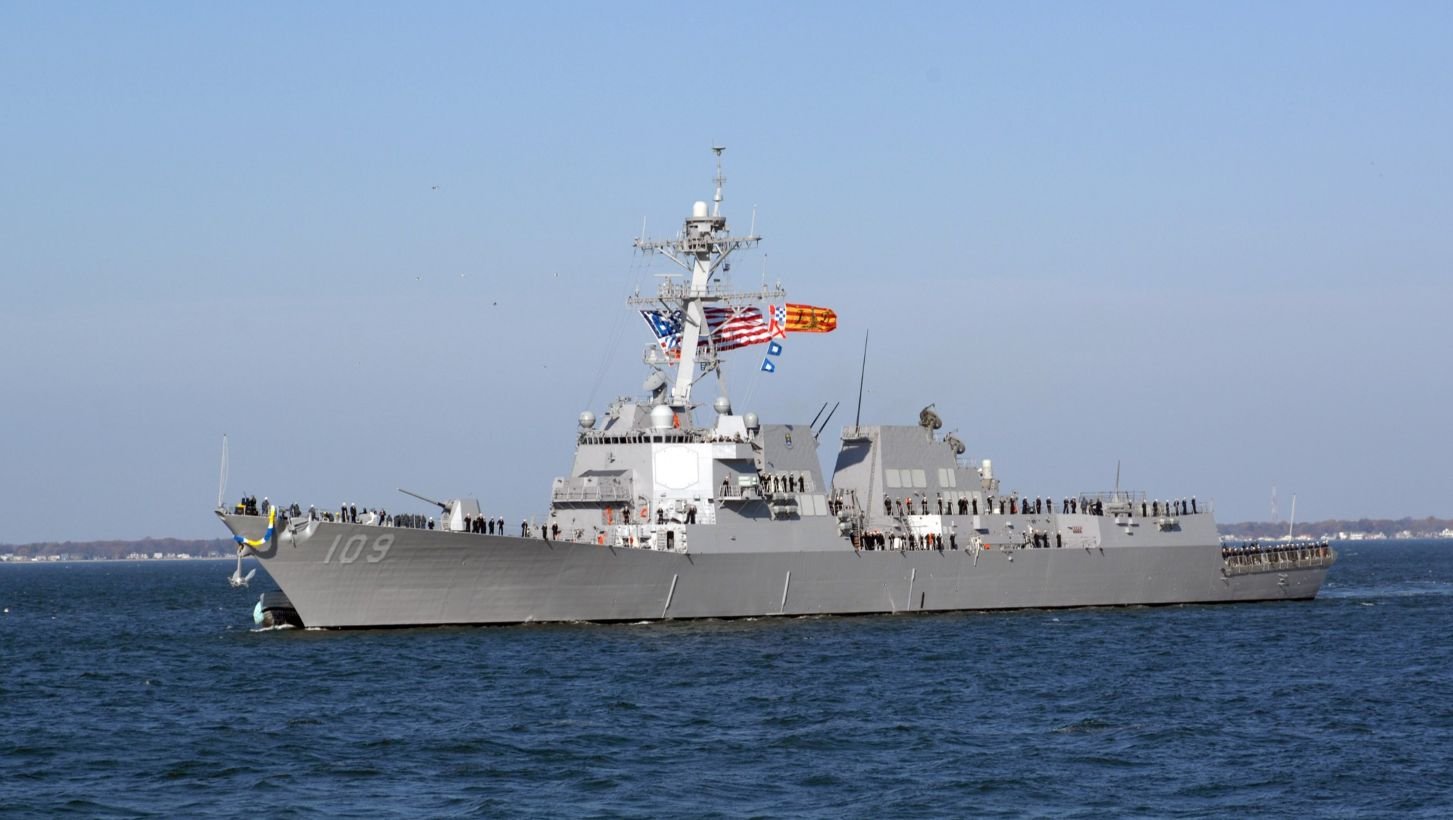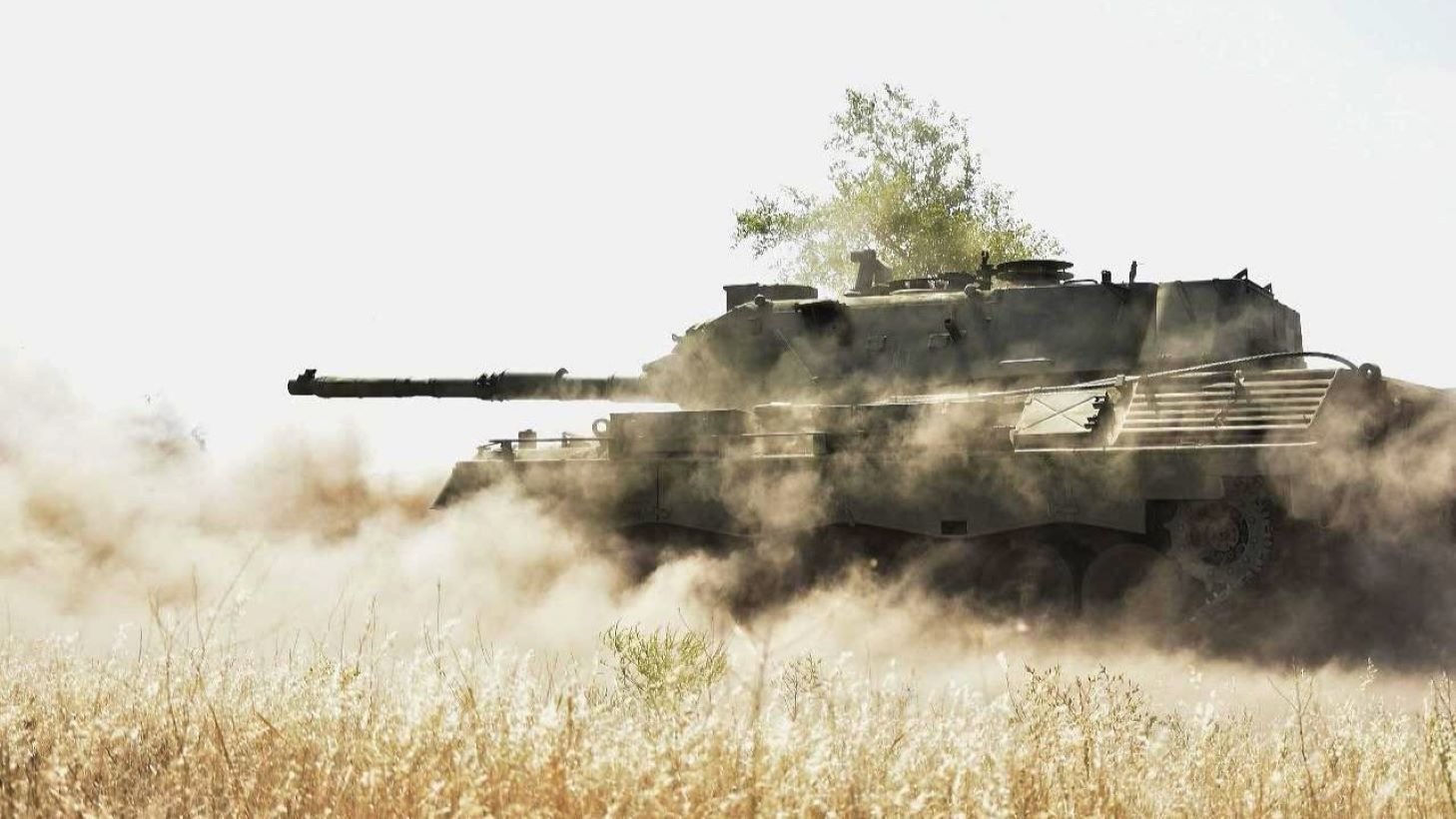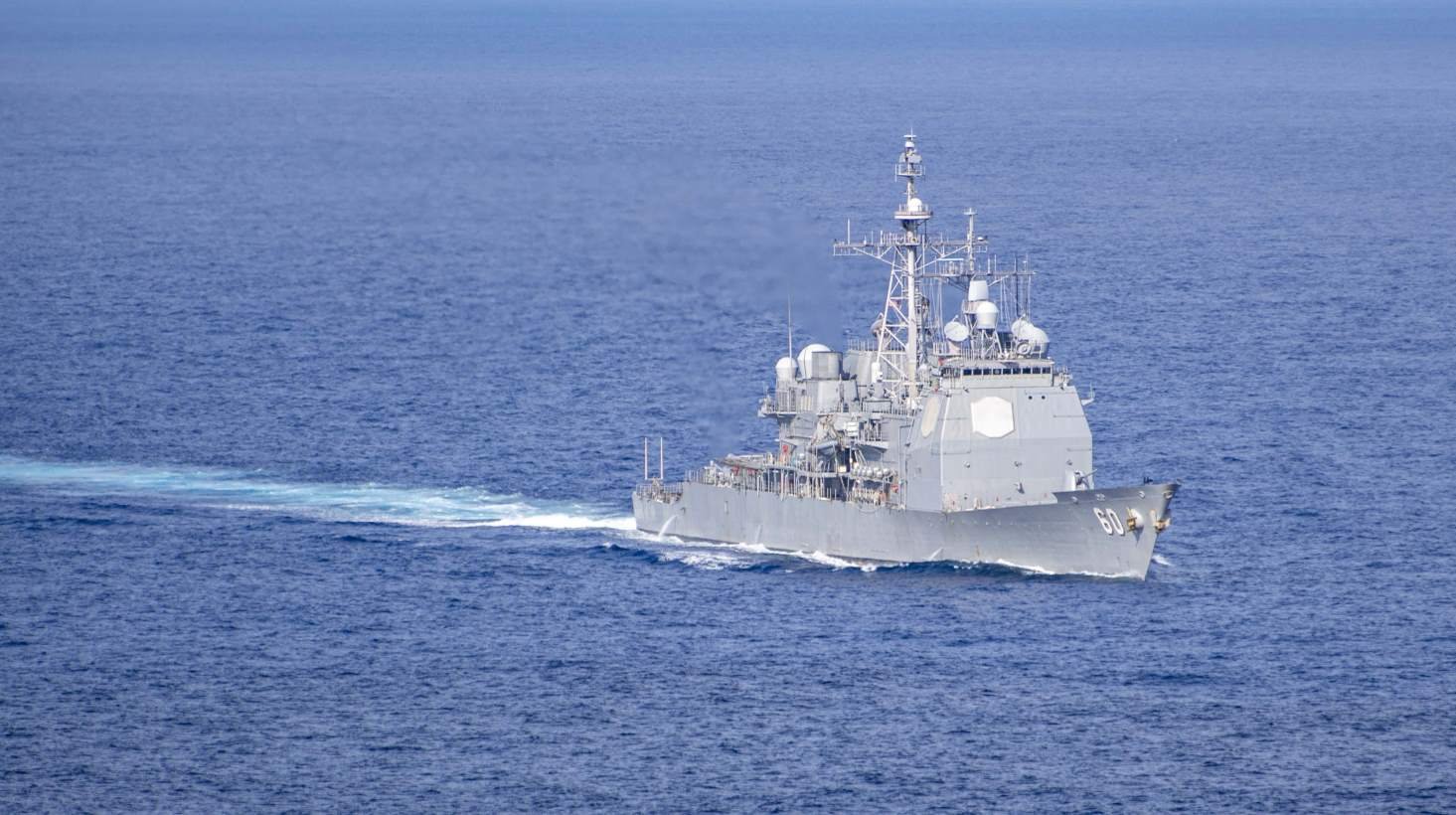-
Posts
790 -
Joined
-
Last visited
Content Type
Profiles
Uncrowned Armory News
Prepping Cookbook
Conspiracy Theories
Uncrowned Tactical Sports News
Prepping
Forums
Events
Everything posted by Uncrowned Guard
-
Intensification of Hostilities in Sudan’s Civil War The humanitarian situation in Sudan worsened this week as violent clashes escalated between the Sudanese Armed Forces (SAF) and the Rapid Support Forces (RSF), primarily in the Darfur and Kordofan regions. Civilian displacement surged, with local agencies estimating that tens of thousands recently fled their homes amid shelling and street battles. Humanitarian corridors remain tenuous, and aid groups warn the risk of famine has risen, particularly in besieged communities. Despite international calls for a ceasefire, neither side indicated readiness for sustained negotiations. Renewed Fighting in Eastern Democratic Republic of the Congo Tensions flared again in North Kivu province, Democratic Republic of the Congo, as the M23 rebel group reportedly advanced toward Goma, the provincial capital. The Congolese military’s latest attempt to repel rebel forces resulted in heavy casualties, both militant and civilian. Residents in affected towns described an environment of fear, with looting and attacks forcing further displacement. Regional powers, including neighboring Rwanda, continue to be accused of exacerbating instability, though formal mediation efforts yielded limited progress this week. Yemen’s Fragile Peace Overshadowed by Skirmishes While the overall intensity of conflict in Yemen has diminished relative to previous years, this week saw renewed fighting between the Houthi movement and forces aligned with the internationally recognized government, especially in Marib and Taiz. Drone strikes and artillery exchanges disrupted fragile local ceasefires. Humanitarian organizations reported increased barriers to delivering food and medical supplies, underscoring the need for renewed diplomatic engagement as Ramadan approaches. Syria: Localized Violence Amidst Stalemate Northern Syria experienced pockets of intense violence, particularly in Idlib province where government artillery targeted rebel-held towns. Civilian casualties were reported, along with further displacement toward the Turkish border. Separately, tensions emerged between Kurdish-led Syrian Democratic Forces and Islamic State (IS) cells in the Deir ez-Zor region, leading to several counter-terror operations. The international community remains divided on broader conflict resolution, but cross-border aid deliveries remain a critical lifeline. Overlooked Stalemates and Surges Beyond widely reported hotspots, several lesser-known conflicts persisted. In Myanmar, fighting between the military junta and anti-coup insurgents intensified in Sagaing and Chin states, with reports of widespread airstrikes and village burnings. In Cameroon’s Anglophone northwest, sporadic clashes between separatists and government forces left dozens dead, and local civil society leaders voiced concerns about “conflict fatigue” amid waning international attention. In the Sahel, Mali experienced further jihadi attacks on army outposts, while violence in Burkina Faso’s Sahel region targeted both security forces and local communities. Outlook: Humanitarian Strains and Calls for Peace Across all these conflict zones, a common theme emerged: the impact on civilians remains grave. Waves of displacement, food insecurity, and strained infrastructure compound the humanitarian fallouts of war. While some diplomatic channels remain open in select arenas, the past week underscored that lasting solutions remain elusive. Observers stress the urgency of global engagement in both major and underreported conflicts, lest silent suffering proliferate away from the public eye. View full article
-
- sudan conflict
- humanitarian crisis
- (and 3 more)
-
Viking Desert Eagle: Norse Inspiration Meets Modern Firepower Magnum Research has announced the release of its Limited Edition Viking Desert Eagle, blending Old World legend with contemporary handgun engineering. This striking model, chambered in .50 Action Express, arrives as both a collector’s artifact and a high-performance shooting tool. Craftsmanship Rooted in Mythology The Viking Desert Eagle features a distressed, battle-worn finish designed to evoke imagery of Norse warriors and epic sagas. Engraved knotwork covers the slide and barrel, echoing ancient artistry, while custom grips display a Viking longship—an emblem of exploration and conquest. This thematic approach sets the pistol apart, making it a statement piece for enthusiasts seeking more than a standard sidearm. Modern Control and Performance Underneath its ornamental exterior, the Viking Desert Eagle retains the powerful attributes that have made the platform iconic. Its robust all-steel construction offers weight and durability, assisting in recoil management from the potent .50 AE cartridge. The gas-operated action, a hallmark of the Desert Eagle design, further tames recoil, while an integrated muzzle brake adds control for more manageable shooting. An included Picatinny rail supports optics, broadening the pistol’s versatility for the modern range. A Collector’s Opportunity Limited in availability, the Viking Desert Eagle ships with a single seven-round magazine and maintains the legendary reliability and power associated with the Desert Eagle line. The firearm targets those who value both artistry and function—inviting owners to own a symbol of Norse legend married to the legacy of Magnum Research’s engineering. Magnum Research: A Legacy of Innovation Founded in 1979, Magnum Research established itself as a leader in powerful hunting handguns, most notably with the Desert Eagle. The company has continued to innovate with models like the BFR revolver, Baby Eagle, MR1911 pistols, and a variety of rifles. Acquired by the Kahr Firearms Group in 2010, Magnum Research remains a prominent name, recognized both for technical achievement and a cinematic presence. The Viking Desert Eagle marks a new chapter, fusing history and mythology with unmatched modern performance.
-
- desert eagle
- viking desert eagle
- (and 3 more)
-
Viking Desert Eagle: Norse Inspiration Meets Modern Firepower Magnum Research has announced the release of its Limited Edition Viking Desert Eagle, blending Old World legend with contemporary handgun engineering. This striking model, chambered in .50 Action Express, arrives as both a collector’s artifact and a high-performance shooting tool. Craftsmanship Rooted in Mythology The Viking Desert Eagle features a distressed, battle-worn finish designed to evoke imagery of Norse warriors and epic sagas. Engraved knotwork covers the slide and barrel, echoing ancient artistry, while custom grips display a Viking longship—an emblem of exploration and conquest. This thematic approach sets the pistol apart, making it a statement piece for enthusiasts seeking more than a standard sidearm. Modern Control and Performance Underneath its ornamental exterior, the Viking Desert Eagle retains the powerful attributes that have made the platform iconic. Its robust all-steel construction offers weight and durability, assisting in recoil management from the potent .50 AE cartridge. The gas-operated action, a hallmark of the Desert Eagle design, further tames recoil, while an integrated muzzle brake adds control for more manageable shooting. An included Picatinny rail supports optics, broadening the pistol’s versatility for the modern range. A Collector’s Opportunity Limited in availability, the Viking Desert Eagle ships with a single seven-round magazine and maintains the legendary reliability and power associated with the Desert Eagle line. The firearm targets those who value both artistry and function—inviting owners to own a symbol of Norse legend married to the legacy of Magnum Research’s engineering. Magnum Research: A Legacy of Innovation Founded in 1979, Magnum Research established itself as a leader in powerful hunting handguns, most notably with the Desert Eagle. The company has continued to innovate with models like the BFR revolver, Baby Eagle, MR1911 pistols, and a variety of rifles. Acquired by the Kahr Firearms Group in 2010, Magnum Research remains a prominent name, recognized both for technical achievement and a cinematic presence. The Viking Desert Eagle marks a new chapter, fusing history and mythology with unmatched modern performance. View full article
-
- desert eagle
- viking desert eagle
- (and 3 more)
-
Escalating Violence in the Middle East This past week, the Middle East continued to see significant instability. Israeli operations in the Gaza Strip intensified following recent rocket fire and cross-border clashes. The United Nations reported rising civilian casualties as both humanitarian corridors and supply convoys remained under constant threat. Meanwhile, in southern Lebanon, sporadic exchanges of artillery fire between Hezbollah and Israeli forces renewed concerns about a wider regional escalation. Diplomatic efforts to broker a ceasefire remain gridlocked, with international actors calling for restraint amid reports of infrastructure damage and displacement. Shifting Frontlines in Ukraine Fighting along Ukraine’s eastern and southern frontlines persisted, with Russian drone and missile strikes targeting energy infrastructure and urban centers. Ukrainian counteroffensives reclaimed pockets of territory near the Kharkiv and Donetsk regions, but entrenched positions have resulted in high casualties on both sides. In the Black Sea, reports surfaced of renewed naval skirmishes, impacting civilian shipping lanes and drawing condemnation from maritime organizations. Humanitarian groups highlighted ongoing challenges in accessing hard-hit communities, particularly in contested frontline zones. Underreported Conflicts in Africa While global attention focused on major wars, several African countries experienced surges in violence. In Sudan, heavy clashes between the Rapid Support Forces and the Sudanese Armed Forces led to increased displacement in Darfur, with aid agencies warning of a deepening humanitarian crisis. The insurgency in the Democratic Republic of Congo’s eastern provinces escalated, as government forces struggled to contain rebel advances linked to resource control. In northern Mozambique, attacks attributed to Islamist militants in Cabo Delgado prompted fresh waves of internal displacement and security crackdowns. Political Instability and Localized Clashes in Asia In Myanmar, the military junta faced renewed offensives from ethnic armed groups across several states. Civilian casualties rose as airstrikes and artillery bombardments intensified, particularly in the regions bordering Thailand and India. Meanwhile, in the Philippines, government troops continued operations against Islamist insurgents in the south, following ambushes and bombings that targeted local communities and security forces. Forgotten Hotspots: Latin America’s Internal Struggles Lesser-known conflict zones in Latin America endured ongoing violence. In Colombia, clashes between dissident factions of the FARC and government forces have displaced thousands in rural areas, complicating peace efforts. Mexico’s war against organized crime escalated in several states, with cartel-on-cartel violence and security force operations resulting in casualties and ongoing insecurity for civilians. Outlook: Rising Humanitarian Concerns Across these theaters of conflict, the past week highlighted a common thread: worsening humanitarian conditions amid protracted violence. Aid agencies urged greater international attention to lesser-known conflicts, stressing the cumulative effects of instability on millions of civilians. As negotiations falter and frontline dynamics shift, prospects for sustainable peace remain uncertain, leaving affected populations in a state of persistent vulnerability.
-
- middle east conflict
- ukraine war
- (and 3 more)
-
Escalating Violence in the Middle East This past week, the Middle East continued to see significant instability. Israeli operations in the Gaza Strip intensified following recent rocket fire and cross-border clashes. The United Nations reported rising civilian casualties as both humanitarian corridors and supply convoys remained under constant threat. Meanwhile, in southern Lebanon, sporadic exchanges of artillery fire between Hezbollah and Israeli forces renewed concerns about a wider regional escalation. Diplomatic efforts to broker a ceasefire remain gridlocked, with international actors calling for restraint amid reports of infrastructure damage and displacement. Shifting Frontlines in Ukraine Fighting along Ukraine’s eastern and southern frontlines persisted, with Russian drone and missile strikes targeting energy infrastructure and urban centers. Ukrainian counteroffensives reclaimed pockets of territory near the Kharkiv and Donetsk regions, but entrenched positions have resulted in high casualties on both sides. In the Black Sea, reports surfaced of renewed naval skirmishes, impacting civilian shipping lanes and drawing condemnation from maritime organizations. Humanitarian groups highlighted ongoing challenges in accessing hard-hit communities, particularly in contested frontline zones. Underreported Conflicts in Africa While global attention focused on major wars, several African countries experienced surges in violence. In Sudan, heavy clashes between the Rapid Support Forces and the Sudanese Armed Forces led to increased displacement in Darfur, with aid agencies warning of a deepening humanitarian crisis. The insurgency in the Democratic Republic of Congo’s eastern provinces escalated, as government forces struggled to contain rebel advances linked to resource control. In northern Mozambique, attacks attributed to Islamist militants in Cabo Delgado prompted fresh waves of internal displacement and security crackdowns. Political Instability and Localized Clashes in Asia In Myanmar, the military junta faced renewed offensives from ethnic armed groups across several states. Civilian casualties rose as airstrikes and artillery bombardments intensified, particularly in the regions bordering Thailand and India. Meanwhile, in the Philippines, government troops continued operations against Islamist insurgents in the south, following ambushes and bombings that targeted local communities and security forces. Forgotten Hotspots: Latin America’s Internal Struggles Lesser-known conflict zones in Latin America endured ongoing violence. In Colombia, clashes between dissident factions of the FARC and government forces have displaced thousands in rural areas, complicating peace efforts. Mexico’s war against organized crime escalated in several states, with cartel-on-cartel violence and security force operations resulting in casualties and ongoing insecurity for civilians. Outlook: Rising Humanitarian Concerns Across these theaters of conflict, the past week highlighted a common thread: worsening humanitarian conditions amid protracted violence. Aid agencies urged greater international attention to lesser-known conflicts, stressing the cumulative effects of instability on millions of civilians. As negotiations falter and frontline dynamics shift, prospects for sustainable peace remain uncertain, leaving affected populations in a state of persistent vulnerability. View full article
-
- middle east conflict
- ukraine war
- (and 3 more)
-
Lockheed and Pentagon Reach $24.3 Billion Agreement for F-35 Production Lockheed Martin and the Pentagon have announced the finalization of a $24.3 billion agreement to produce 296 F-35 fighter aircraft, marking a major milestone in the ongoing development and procurement of the advanced stealth jet. The deal, covering production lots 18 and 19, brings over two years of negotiations to a close and sets a course for deliveries to begin in 2026. Breakdown of the Agreement and Production Plans The newly inked contract includes 148 F-35 airframes in each of the two production lots. While the total figure encompasses aircraft destined for both U.S. military branches and international partners, further details on the specific distribution and per-unit costs remain undisclosed. According to the Pentagon’s Joint Program Office (JPO), the agreement strictly covers the airframes; the jet engines, supplied by Pratt & Whitney, are subject to separate contracts. Most recently, Pratt & Whitney was awarded nearly $2.9 billion to begin engine production for Lot 18, with further engine contracts expected to be finalized in 2026. Deliveries for jets under this contract are scheduled to commence in 2026. The JPO indicated that once the engine contracts are finalized, a clearer “flyaway cost” for each aircraft—essentially the price per jet ready for operational deployment—will be available. For context, previous production lots reported an average flyaway cost of $82.5 million for the F-35A variant. Pricing Dynamics and Long-Term Trends Lockheed Martin confirmed that the price increase per jet in lots 18 and 19 was held below the rate of inflation, despite industry-wide challenges such as rising raw material costs. The Pentagon acknowledged that Lot 18 experienced notable price pressures but stated that, when adjusting for inflation, costs remained generally in line with those from previous lots. The prolonged negotiations, which began in mid-2023, reflected the complexities involved in large-scale defense procurement programs, particularly as global demand for the F-35 remains strong. Notably, political factors and recent geopolitical developments have added layers of complexity to international sales, with the F-35 program sometimes caught in broader diplomatic currents. Modernization Efforts and Future Outlook The finalized contract comes at a time when the Pentagon is actively pursuing upgrades for the F-35 fleet. However, recent findings from the Government Accountability Office indicate that the high-profile Block 4 modernization program will face delays, now slated for 2031 with a narrower set of enhancements than originally planned. Despite these challenges, both Lockheed Martin and the Department of Defense remain confident in the F-35’s place at the forefront of modern air combat. In a statement, Chauncey McIntosh, Vice President and General Manager for the F-35 program at Lockheed, highlighted the steady demand and reaffirmed the company’s commitment to supporting its customers and the long-term role of the F-35 in securing operational advantage. Conclusion The conclusion of this multi-year negotiation signals continued investment in the F-35 platform amid shifting global security dynamics. With production moving forward under the new contract, stakeholders will be monitoring both cost and capability as the program advances into its next phase.
-
- lockheed martin
- f-35 fighter jet
- (and 3 more)
-
Lockheed and Pentagon Reach $24.3 Billion Agreement for F-35 Production Lockheed Martin and the Pentagon have announced the finalization of a $24.3 billion agreement to produce 296 F-35 fighter aircraft, marking a major milestone in the ongoing development and procurement of the advanced stealth jet. The deal, covering production lots 18 and 19, brings over two years of negotiations to a close and sets a course for deliveries to begin in 2026. Breakdown of the Agreement and Production Plans The newly inked contract includes 148 F-35 airframes in each of the two production lots. While the total figure encompasses aircraft destined for both U.S. military branches and international partners, further details on the specific distribution and per-unit costs remain undisclosed. According to the Pentagon’s Joint Program Office (JPO), the agreement strictly covers the airframes; the jet engines, supplied by Pratt & Whitney, are subject to separate contracts. Most recently, Pratt & Whitney was awarded nearly $2.9 billion to begin engine production for Lot 18, with further engine contracts expected to be finalized in 2026. Deliveries for jets under this contract are scheduled to commence in 2026. The JPO indicated that once the engine contracts are finalized, a clearer “flyaway cost” for each aircraft—essentially the price per jet ready for operational deployment—will be available. For context, previous production lots reported an average flyaway cost of $82.5 million for the F-35A variant. Pricing Dynamics and Long-Term Trends Lockheed Martin confirmed that the price increase per jet in lots 18 and 19 was held below the rate of inflation, despite industry-wide challenges such as rising raw material costs. The Pentagon acknowledged that Lot 18 experienced notable price pressures but stated that, when adjusting for inflation, costs remained generally in line with those from previous lots. The prolonged negotiations, which began in mid-2023, reflected the complexities involved in large-scale defense procurement programs, particularly as global demand for the F-35 remains strong. Notably, political factors and recent geopolitical developments have added layers of complexity to international sales, with the F-35 program sometimes caught in broader diplomatic currents. Modernization Efforts and Future Outlook The finalized contract comes at a time when the Pentagon is actively pursuing upgrades for the F-35 fleet. However, recent findings from the Government Accountability Office indicate that the high-profile Block 4 modernization program will face delays, now slated for 2031 with a narrower set of enhancements than originally planned. Despite these challenges, both Lockheed Martin and the Department of Defense remain confident in the F-35’s place at the forefront of modern air combat. In a statement, Chauncey McIntosh, Vice President and General Manager for the F-35 program at Lockheed, highlighted the steady demand and reaffirmed the company’s commitment to supporting its customers and the long-term role of the F-35 in securing operational advantage. Conclusion The conclusion of this multi-year negotiation signals continued investment in the F-35 platform amid shifting global security dynamics. With production moving forward under the new contract, stakeholders will be monitoring both cost and capability as the program advances into its next phase. View full article
-
- lockheed martin
- f-35 fighter jet
- (and 3 more)
-
President Trump Proposes Using Military Training in Major U.S. Cities President Donald Trump has suggested that the U.S. military conduct training exercises in several major American cities, framing urban disorder as a “war from within.” Speaking before top military leaders at Quantico, Virginia, the president specifically named cities such as San Francisco, Chicago, New York, and Los Angeles as potential sites, asserting these urban areas, led by Democratic officials, warrant direct military involvement. Address to Military Leadership Highlights Domestic Security Concerns The president addressed an audience of senior military commanders, characterizing his proposal as an extension of recent military deployments on U.S. soil. Trump called on the nation’s top generals and admirals to participate in efforts to “straighten out” what he described as “dangerous” cities. Referring to his plan as a kind of domestic warfare, he stated, “That’s a war too. It’s a war from within.” The remarks followed a speech by Secretary of Defense Pete Hegseth, who underscored a hardline stance on internal challenges to military culture and issued a warning to Pentagon leaders dissenting from the administration’s direction. The event itself came after heightened speculation over an unscheduled gathering of military leaders, drawn from posts worldwide to the Quantico base. Recent Deployments and Legal Pushback In recent weeks, military deployments within U.S. cities have become more common, with National Guard units appearing in locations such as Portland, Oregon, and anticipated arrivals in Memphis, Tennessee. These moves have sometimes prompted legal challenges; for instance, Portland immediately initiated a lawsuit following the arrival of National Guard personnel. The scope of military involvement also extends beyond law enforcement support. Troops have been tasked with border security and involvement in immigration enforcement actions, including repatriation operations and guard duties at places like Naval Station Guantanamo Bay. Mixed Reactions from Military Leadership President Trump’s proposals were reportedly met with a muted response from the assembled senior officers. He acknowledged the subdued atmosphere, inviting open feedback but noting the risks involved for those in uniform who openly disagreed. Observers and experts in civil-military relations interpreted the restrained reactions as a signal of adherence to traditional military norms, which discourage partisan engagement by uniformed leaders. “It’s very different when we consider the norms of military professionalism to be making those statements in front of an audience of uniformed leaders,” explained Katherine Kuzminski, director of studies at the Center for a New American Security, emphasizing the importance of upholding nonpartisan standards in military conduct. Tensions Between Politics and Military Professionalism This episode highlights ongoing tensions surrounding the military’s role in domestic affairs and its relationship with civilian leadership. Recent incidents, including past speeches in front of active-duty personnel, have drawn attention to the boundaries between political rhetoric and military professionalism. Experts note that while the president is entitled to make political statements in public forums, the context and audience are crucial in maintaining the integrity of military institutions. For now, the response of the military’s top brass suggests continued commitment to established norms and regulations, even as the administration signals a willingness to leverage military resources in response to domestic security and political challenges.
-
- donald trump
- u.s. military
- (and 3 more)
-
President Trump Proposes Using Military Training in Major U.S. Cities President Donald Trump has suggested that the U.S. military conduct training exercises in several major American cities, framing urban disorder as a “war from within.” Speaking before top military leaders at Quantico, Virginia, the president specifically named cities such as San Francisco, Chicago, New York, and Los Angeles as potential sites, asserting these urban areas, led by Democratic officials, warrant direct military involvement. Address to Military Leadership Highlights Domestic Security Concerns The president addressed an audience of senior military commanders, characterizing his proposal as an extension of recent military deployments on U.S. soil. Trump called on the nation’s top generals and admirals to participate in efforts to “straighten out” what he described as “dangerous” cities. Referring to his plan as a kind of domestic warfare, he stated, “That’s a war too. It’s a war from within.” The remarks followed a speech by Secretary of Defense Pete Hegseth, who underscored a hardline stance on internal challenges to military culture and issued a warning to Pentagon leaders dissenting from the administration’s direction. The event itself came after heightened speculation over an unscheduled gathering of military leaders, drawn from posts worldwide to the Quantico base. Recent Deployments and Legal Pushback In recent weeks, military deployments within U.S. cities have become more common, with National Guard units appearing in locations such as Portland, Oregon, and anticipated arrivals in Memphis, Tennessee. These moves have sometimes prompted legal challenges; for instance, Portland immediately initiated a lawsuit following the arrival of National Guard personnel. The scope of military involvement also extends beyond law enforcement support. Troops have been tasked with border security and involvement in immigration enforcement actions, including repatriation operations and guard duties at places like Naval Station Guantanamo Bay. Mixed Reactions from Military Leadership President Trump’s proposals were reportedly met with a muted response from the assembled senior officers. He acknowledged the subdued atmosphere, inviting open feedback but noting the risks involved for those in uniform who openly disagreed. Observers and experts in civil-military relations interpreted the restrained reactions as a signal of adherence to traditional military norms, which discourage partisan engagement by uniformed leaders. “It’s very different when we consider the norms of military professionalism to be making those statements in front of an audience of uniformed leaders,” explained Katherine Kuzminski, director of studies at the Center for a New American Security, emphasizing the importance of upholding nonpartisan standards in military conduct. Tensions Between Politics and Military Professionalism This episode highlights ongoing tensions surrounding the military’s role in domestic affairs and its relationship with civilian leadership. Recent incidents, including past speeches in front of active-duty personnel, have drawn attention to the boundaries between political rhetoric and military professionalism. Experts note that while the president is entitled to make political statements in public forums, the context and audience are crucial in maintaining the integrity of military institutions. For now, the response of the military’s top brass suggests continued commitment to established norms and regulations, even as the administration signals a willingness to leverage military resources in response to domestic security and political challenges. View full article
-
- donald trump
- u.s. military
- (and 3 more)
-
Global Overview: A Week of Intensified Conflict The past week has seen both continuing hostilities and renewed flashpoints in various regions across the globe. From longstanding wars to simmering, underreported clashes, the international community faces a complex tableau of violence. The following is a summary of key developments. Middle East: Spirals of Escalation Syria remains a theater of competing interests, with clashes between the Syrian Democratic Forces (SDF) and Turkish-backed militias escalating in the north. Airstrikes in Idlib and renewed artillery exchanges near the Turkish border have displaced hundreds in recent days. In Yemen, the fragile UN-brokered truce appears increasingly tenuous, as Houthi drone attacks and retaliatory Saudi-led airstrikes were reported near the Red Sea coast, imperiling civilian shipping and interrupting food aid deliveries. Meanwhile, in Israel and Gaza, a flare-up early in the week saw several rockets launched toward southern Israel, sparking swift air raids in response. Although no casualties were reported, the violence raised concerns over the durability of informal ceasefires. Africa: Hidden Wars and New Displacements Sudan’s conflict continues to generate spiraling humanitarian fallout, with fighting between the Rapid Support Forces and Sudanese Armed Forces reported in Omdurman and El Fasher. Aid organizations warn of looming famine as access to civilians remains sharply constrained. Meanwhile, in the Sahel, jihadist groups executed coordinated attacks in central Mali and northern Burkina Faso, overwhelming local security posts and prompting mass civilian movements. Chad’s Lake Chad region also witnessed renewed Boko Haram incursions, with at least a dozen villages affected. A lesser-covered crisis is unfolding in Cameroon’s Northwest region, where Anglophone separatists launched multiple ambushes targeting government troops, further complicating the beleaguered peace process and forcing fresh displacements among local populations. Asia-Pacific: Border Tensions Persist Hostilities in Myanmar’s borderlands surged as the military junta intensified operations against ethnic rebel strongholds in the Shan and Kayin states. Civil society sources report casualties among both combatants and noncombatants, with infrastructure damage impeding relief efforts. Across the Indo-Pakistani border in Kashmir, sporadic shelling added to mounting unease, as both sides traded accusations over ceasefire violations. In the Philippines, government forces battled remnants of Abu Sayyaf and other armed groups in Sulu province, marking several weeks of counterinsurgency sweeps in inhospitable terrain. Latin America: Crime and Conflict Converge Violence surged anew in Haiti’s capital, Port-au-Prince, where armed gangs expanded territorial clashes, paralyzing humanitarian work and halting port operations. The government’s struggle to assert control drew renewed calls for regional intervention. In Colombia, a peace process setback became evident when ELN rebels and dissident FARC groups reengaged in armed conflict in Arauca, underscoring the fragility of agreements reached earlier this year. Lesser-Reported Flashpoints Clashes in Nagorno-Karabakh’s borderlands, despite an official ceasefire, resulted in several injuries and illustrated persistent volatility in the South Caucasus. In Papua New Guinea’s highlands, tribal warfare over land and political allegiances triggered a new wave of casualties and forced displacements, rarely covered by mainstream outlets. Humanitarian Impact and Looking Ahead Across all theaters, civilians bore the brunt: displacement, hunger, and access to medical care remain common themes. Aid agencies have repeatedly called for safe corridors to deliver relief, but progress remains slow amid ongoing violence. The persistence of these crises, many absent from daily headlines, highlights the complex tapestry of today’s global conflicts and the urgent need for sustained diplomatic engagement.
-
- global-conflict
- middle-east-tensions
- (and 3 more)
-
Global Overview: A Week of Intensified Conflict The past week has seen both continuing hostilities and renewed flashpoints in various regions across the globe. From longstanding wars to simmering, underreported clashes, the international community faces a complex tableau of violence. The following is a summary of key developments. Middle East: Spirals of Escalation Syria remains a theater of competing interests, with clashes between the Syrian Democratic Forces (SDF) and Turkish-backed militias escalating in the north. Airstrikes in Idlib and renewed artillery exchanges near the Turkish border have displaced hundreds in recent days. In Yemen, the fragile UN-brokered truce appears increasingly tenuous, as Houthi drone attacks and retaliatory Saudi-led airstrikes were reported near the Red Sea coast, imperiling civilian shipping and interrupting food aid deliveries. Meanwhile, in Israel and Gaza, a flare-up early in the week saw several rockets launched toward southern Israel, sparking swift air raids in response. Although no casualties were reported, the violence raised concerns over the durability of informal ceasefires. Africa: Hidden Wars and New Displacements Sudan’s conflict continues to generate spiraling humanitarian fallout, with fighting between the Rapid Support Forces and Sudanese Armed Forces reported in Omdurman and El Fasher. Aid organizations warn of looming famine as access to civilians remains sharply constrained. Meanwhile, in the Sahel, jihadist groups executed coordinated attacks in central Mali and northern Burkina Faso, overwhelming local security posts and prompting mass civilian movements. Chad’s Lake Chad region also witnessed renewed Boko Haram incursions, with at least a dozen villages affected. A lesser-covered crisis is unfolding in Cameroon’s Northwest region, where Anglophone separatists launched multiple ambushes targeting government troops, further complicating the beleaguered peace process and forcing fresh displacements among local populations. Asia-Pacific: Border Tensions Persist Hostilities in Myanmar’s borderlands surged as the military junta intensified operations against ethnic rebel strongholds in the Shan and Kayin states. Civil society sources report casualties among both combatants and noncombatants, with infrastructure damage impeding relief efforts. Across the Indo-Pakistani border in Kashmir, sporadic shelling added to mounting unease, as both sides traded accusations over ceasefire violations. In the Philippines, government forces battled remnants of Abu Sayyaf and other armed groups in Sulu province, marking several weeks of counterinsurgency sweeps in inhospitable terrain. Latin America: Crime and Conflict Converge Violence surged anew in Haiti’s capital, Port-au-Prince, where armed gangs expanded territorial clashes, paralyzing humanitarian work and halting port operations. The government’s struggle to assert control drew renewed calls for regional intervention. In Colombia, a peace process setback became evident when ELN rebels and dissident FARC groups reengaged in armed conflict in Arauca, underscoring the fragility of agreements reached earlier this year. Lesser-Reported Flashpoints Clashes in Nagorno-Karabakh’s borderlands, despite an official ceasefire, resulted in several injuries and illustrated persistent volatility in the South Caucasus. In Papua New Guinea’s highlands, tribal warfare over land and political allegiances triggered a new wave of casualties and forced displacements, rarely covered by mainstream outlets. Humanitarian Impact and Looking Ahead Across all theaters, civilians bore the brunt: displacement, hunger, and access to medical care remain common themes. Aid agencies have repeatedly called for safe corridors to deliver relief, but progress remains slow amid ongoing violence. The persistence of these crises, many absent from daily headlines, highlights the complex tapestry of today’s global conflicts and the urgent need for sustained diplomatic engagement. View full article
-
- global-conflict
- middle-east-tensions
- (and 3 more)
-
Sweden Issues Stern Warning on Airspace Violations Amid Heightened Tensions Sweden’s Minister of Defence, Pål Jonson, has issued a direct warning that Swedish forces will engage and shoot down any Russian aircraft intruding into the nation’s airspace. The announcement, delivered on September 23, 2025, and reported by Aftonbladet, underscores the growing anxiety over Russian aerial incursions near NATO borders and signals a hardened Baltic security environment. Rising Regional Tensions and Sweden’s NATO Integration The declaration from Stockholm comes in the wake of a series of Russian drone and fighter jet breaches into NATO-aligned airspace, notably recent incidents over Estonia, Poland, and Romania. With Sweden’s accession as a full NATO member, these violations take on new significance; the nation’s defense commitments are now inseparable from the alliance’s collective security framework. Sweden’s readiness to use force reflects mounting worries about the frequency and intensity of Russian aircraft activity around the Baltic states. The latest instance—three Russian MiG-31s reportedly entering Estonian airspace for 12 minutes on September 19—has intensified concerns among NATO leaders about the security of the alliance’s eastern front. Gripen Fighters at the Forefront of Swedish Air Defense Central to Sweden’s deterrence strategy is the deployment of Saab JAS 39 Gripen multirole fighter jets. These advanced aircraft are equipped with state-of-the-art avionics, AESA radar, and both Meteor and IRIS-T air-to-air missiles, giving them an edge in rapid interception and aerial combat. The Gripen’s capacity to operate from dispersed and rugged locations enhances Sweden’s ability to respond quickly and flexibly to potential threats. In contrast to Russian long-range platforms such as the MiG-31 and Su-35, the Gripen’s agility, modern warfare integration, and interoperability with NATO allies fortify its role as a core asset in maintaining Sweden’s—and the alliance’s—airspace integrity. Historical Context and Escalating Security Stakes Sweden’s approach is shaped by decades of vigilantly guarding its airspace, particularly throughout the Cold War, when neutrality required robust aerial defenses. Even more recently, close encounters with Russian aircraft near Swedish and Baltic borders occurred with increasing regularity, prompting enhanced readiness and rapid response mandates. Stockholm's new posture—explicitly authorizing the use of force under its national rules of engagement—follows a broader NATO and allied push for a “zero-tolerance” stance on airspace violations. Notably, Sweden’s position aligns closely with those of Poland and the United Kingdom, both of which have openly committed to immediate defensive action in the face of suspected Russian provocations. Strategic Implications for the Baltic and NATO By drawing a firm red line, Sweden is sending a message not only to Moscow but to the entire NATO alliance: any breach of airspace could trigger a direct military response. This marks a significant shift in the Baltic region’s security calculus, where even minor aerial incidents risk escalating into larger confrontations—a situation reminiscent of the 2015 downing of a Russian jet by Türkiye, which had far-reaching diplomatic repercussions. With its advanced fighter fleet on constant alert and its position now fully integrated into NATO’s networked defense posture, Sweden’s policy signals both a deterrent and a commitment to allied unity. How Moscow responds to this development, and how steadfastly Sweden and its NATO partners enforce this doctrine, may become key determinants of security dynamics in Northern Europe through the coming years.
-
- sweden defense
- russian airspace violations
- (and 3 more)
-
Sweden Issues Stern Warning on Airspace Violations Amid Heightened Tensions Sweden’s Minister of Defence, Pål Jonson, has issued a direct warning that Swedish forces will engage and shoot down any Russian aircraft intruding into the nation’s airspace. The announcement, delivered on September 23, 2025, and reported by Aftonbladet, underscores the growing anxiety over Russian aerial incursions near NATO borders and signals a hardened Baltic security environment. Rising Regional Tensions and Sweden’s NATO Integration The declaration from Stockholm comes in the wake of a series of Russian drone and fighter jet breaches into NATO-aligned airspace, notably recent incidents over Estonia, Poland, and Romania. With Sweden’s accession as a full NATO member, these violations take on new significance; the nation’s defense commitments are now inseparable from the alliance’s collective security framework. Sweden’s readiness to use force reflects mounting worries about the frequency and intensity of Russian aircraft activity around the Baltic states. The latest instance—three Russian MiG-31s reportedly entering Estonian airspace for 12 minutes on September 19—has intensified concerns among NATO leaders about the security of the alliance’s eastern front. Gripen Fighters at the Forefront of Swedish Air Defense Central to Sweden’s deterrence strategy is the deployment of Saab JAS 39 Gripen multirole fighter jets. These advanced aircraft are equipped with state-of-the-art avionics, AESA radar, and both Meteor and IRIS-T air-to-air missiles, giving them an edge in rapid interception and aerial combat. The Gripen’s capacity to operate from dispersed and rugged locations enhances Sweden’s ability to respond quickly and flexibly to potential threats. In contrast to Russian long-range platforms such as the MiG-31 and Su-35, the Gripen’s agility, modern warfare integration, and interoperability with NATO allies fortify its role as a core asset in maintaining Sweden’s—and the alliance’s—airspace integrity. Historical Context and Escalating Security Stakes Sweden’s approach is shaped by decades of vigilantly guarding its airspace, particularly throughout the Cold War, when neutrality required robust aerial defenses. Even more recently, close encounters with Russian aircraft near Swedish and Baltic borders occurred with increasing regularity, prompting enhanced readiness and rapid response mandates. Stockholm's new posture—explicitly authorizing the use of force under its national rules of engagement—follows a broader NATO and allied push for a “zero-tolerance” stance on airspace violations. Notably, Sweden’s position aligns closely with those of Poland and the United Kingdom, both of which have openly committed to immediate defensive action in the face of suspected Russian provocations. Strategic Implications for the Baltic and NATO By drawing a firm red line, Sweden is sending a message not only to Moscow but to the entire NATO alliance: any breach of airspace could trigger a direct military response. This marks a significant shift in the Baltic region’s security calculus, where even minor aerial incidents risk escalating into larger confrontations—a situation reminiscent of the 2015 downing of a Russian jet by Türkiye, which had far-reaching diplomatic repercussions. With its advanced fighter fleet on constant alert and its position now fully integrated into NATO’s networked defense posture, Sweden’s policy signals both a deterrent and a commitment to allied unity. How Moscow responds to this development, and how steadfastly Sweden and its NATO partners enforce this doctrine, may become key determinants of security dynamics in Northern Europe through the coming years. View full article
-
- sweden defense
- russian airspace violations
- (and 3 more)
-
Escalation and Stalemates: A Snapshot of Global Conflict The past week has seen persistent violence and military tensions spanning continents—some dominating headlines, others unfolding beyond the radar of mainstream attention. Civilians continue to pay a steep price as political friction hardens into entrenched warfare in both well-known and overlooked regions. Ukraine: Stalled Offensives and Aerial Threats Eastern Europe’s turbulent front remains fraught, with the war in Ukraine showing little sign of abatement. Russian drone and missile campaigns intensified, targeting energy infrastructure in Odesa and Kharkiv, while Ukrainian forces reported marginal advances near the eastern city of Chasiv Yar. The twin grind of artillery duels and urban skirmishes continues to drain both military and civilian resources. Meanwhile, international diplomatic efforts to broker ceasefires appear stalled, with both sides accusing each other of escalating strikes. Sudan and the Sahel: Humanitarian Crisis Deepens The conflict between Sudan’s national army and the Rapid Support Forces (RSF) raged on, particularly around El Fasher, the last Darfuri city still under government control. Heavy shelling this week displaced thousands and hampered access for humanitarian organizations. In the wider Sahel, armed insurgencies and military coups—spanning Mali, Burkina Faso, and Niger—led to further humanitarian strains. Resources remain severely stretched as international agencies warn of a rapidly rising refugee count and worsening food insecurity. Myanmar: Intensifying Ethnic Strife Myanmar’s civil war, now in its fourth year since the 2021 military coup, escalated as ethnic armed groups stepped up coordinated offensives in the country’s north and east. Reports from Kachin and Shan states detail heavy clashes, with the military junta resorting to increased airstrikes. Urban centers saw a wave of arrests following anti-coup protests marking the anniversary of the country’s first democratic election in 2015. Human rights groups highlighted the growing risk of famine as tens of thousands remain displaced. Overlooked Frontlines: Nagorno-Karabakh, Cameroon, and Yemen Lesser-known hotspots saw renewed challenges. Though Azerbaijan claims full control over Nagorno-Karabakh (now referred to as the Karabakh region), sporadic violence and a humanitarian exodus continued to make headlines. In Cameroon’s Anglophone regions, reports of village burnings and kidnappings by separatist fighters have reemerged, overshadowed by regional security concerns elsewhere. Yemen’s fragile truce held tenuously amid reports of skirmishes between Houthi forces and pro-government troops, especially along oil-rich frontlines in Marib. The Houthi’s continued maritime raids in the Red Sea aggravated international maritime trade, inviting further condemnation and risk of regional spillover. Latin America and the Asia-Pacific: Persistent Insurrections In Colombia, peace talks with the National Liberation Army (ELN) entered a precarious phase, overshadowed by deadly clashes in rural border areas. Meanwhile, the Philippines saw intensified clashes between government troops and communist insurgents in Mindanao, disrupting the fragile peace that has held intermittently in recent years. Beyond the Headlines: The Cost to Civilians Across the map, a recurrent theme is emerging: despite varying causes and contexts, civilian populations bear the heaviest burdens of conflict—from forced displacement and food shortages to disruptions in healthcare and education. Humanitarian organizations repeatedly warn of deepening crises and diminishing aid access, urging renewed international commitment to peacebuilding and the protection of non-combatants. As the week closes, the spectrum of warfare—overt and covert—remains broad and complex, demanding nuanced attention to underreported struggles as much as the world’s most visible flashpoints.
-
- global-conflict
- humanitarian-crisis
- (and 3 more)
-
Escalation and Stalemates: A Snapshot of Global Conflict The past week has seen persistent violence and military tensions spanning continents—some dominating headlines, others unfolding beyond the radar of mainstream attention. Civilians continue to pay a steep price as political friction hardens into entrenched warfare in both well-known and overlooked regions. Ukraine: Stalled Offensives and Aerial Threats Eastern Europe’s turbulent front remains fraught, with the war in Ukraine showing little sign of abatement. Russian drone and missile campaigns intensified, targeting energy infrastructure in Odesa and Kharkiv, while Ukrainian forces reported marginal advances near the eastern city of Chasiv Yar. The twin grind of artillery duels and urban skirmishes continues to drain both military and civilian resources. Meanwhile, international diplomatic efforts to broker ceasefires appear stalled, with both sides accusing each other of escalating strikes. Sudan and the Sahel: Humanitarian Crisis Deepens The conflict between Sudan’s national army and the Rapid Support Forces (RSF) raged on, particularly around El Fasher, the last Darfuri city still under government control. Heavy shelling this week displaced thousands and hampered access for humanitarian organizations. In the wider Sahel, armed insurgencies and military coups—spanning Mali, Burkina Faso, and Niger—led to further humanitarian strains. Resources remain severely stretched as international agencies warn of a rapidly rising refugee count and worsening food insecurity. Myanmar: Intensifying Ethnic Strife Myanmar’s civil war, now in its fourth year since the 2021 military coup, escalated as ethnic armed groups stepped up coordinated offensives in the country’s north and east. Reports from Kachin and Shan states detail heavy clashes, with the military junta resorting to increased airstrikes. Urban centers saw a wave of arrests following anti-coup protests marking the anniversary of the country’s first democratic election in 2015. Human rights groups highlighted the growing risk of famine as tens of thousands remain displaced. Overlooked Frontlines: Nagorno-Karabakh, Cameroon, and Yemen Lesser-known hotspots saw renewed challenges. Though Azerbaijan claims full control over Nagorno-Karabakh (now referred to as the Karabakh region), sporadic violence and a humanitarian exodus continued to make headlines. In Cameroon’s Anglophone regions, reports of village burnings and kidnappings by separatist fighters have reemerged, overshadowed by regional security concerns elsewhere. Yemen’s fragile truce held tenuously amid reports of skirmishes between Houthi forces and pro-government troops, especially along oil-rich frontlines in Marib. The Houthi’s continued maritime raids in the Red Sea aggravated international maritime trade, inviting further condemnation and risk of regional spillover. Latin America and the Asia-Pacific: Persistent Insurrections In Colombia, peace talks with the National Liberation Army (ELN) entered a precarious phase, overshadowed by deadly clashes in rural border areas. Meanwhile, the Philippines saw intensified clashes between government troops and communist insurgents in Mindanao, disrupting the fragile peace that has held intermittently in recent years. Beyond the Headlines: The Cost to Civilians Across the map, a recurrent theme is emerging: despite varying causes and contexts, civilian populations bear the heaviest burdens of conflict—from forced displacement and food shortages to disruptions in healthcare and education. Humanitarian organizations repeatedly warn of deepening crises and diminishing aid access, urging renewed international commitment to peacebuilding and the protection of non-combatants. As the week closes, the spectrum of warfare—overt and covert—remains broad and complex, demanding nuanced attention to underreported struggles as much as the world’s most visible flashpoints. View full article
-
- global-conflict
- humanitarian-crisis
- (and 3 more)
-
Ukrainian Forces Reclaim Filia Village Amidst Renewed Fighting in Dnipropetrovsk Oblast Ukrainian troops have retaken the village of Filia in Dnipropetrovsk Oblast after a brief period of Russian occupation, according to an official statement from Oleksii Bielskyi, spokesperson for the Dnipro Operational Strategic Group. The operation, conducted by Ukraine’s 425th Skelya Regiment, marks the latest flashpoint in Moscow’s expanding efforts to establish a foothold in regions previously untouched by occupation. Dnipropetrovsk: A New Frontline in the Conflict Recent weeks have witnessed an intensification of Russian military activity in Dnipropetrovsk Oblast, a region that until late August had been spared from ground incursions since the start of the war. In what Kyiv initially denied, Russian battalions claimed to have raised their flag in several villages, including Filia, on Ukraine’s Independence Day. However, video releases from Ukrainian units and battlefield monitoring platforms, such as DeepState, reaffirmed that Filia was retaken and remains under Ukrainian control. The rapid Ukrainian response, characterized by grenade attacks, close-quarters combat, and prisoner captures, reflects evolving tactics to counter Russia’s attempts to establish a “buffer zone” along the region's southern boundary with Donetsk. While the recapture of Filia is celebrated as a tactical success, the situation remains volatile, with the frontlines in the oblast still subject to regular artillery and drone attacks. Dnipropetrovsk’s proximity to Donetsk—long a center of Russian military efforts—continues to render it a strategic priority for both forces. Strategic Strikes Deep Inside Russian Territory Alongside territorial clashes, Ukrainian military operations have extended far beyond the immediate conflict zone. On September 14, Ukraine struck the Kirishi oil refinery in Russia’s Leningrad Oblast, a facility processing over 17 million tons of oil annually and situated more than 800 kilometers from Ukraine’s border. Russian officials reported that air defenses engaged multiple drones, one of which caused a fire at the site. Similarly, a Ukrainian drone targeted the Metafrax Chemicals plant in Perm Krai, nearly 1,800 kilometers from Ukraine, reportedly damaging urea production equipment—a resource with dual application in agriculture and explosives manufacture. These operations follow a pattern of Ukrainian strikes on logistical and industrial facilities critical to Russian military supply chains, including an attack on Russia's Black Sea Fleet communications hub in occupied Crimea, and operations to disrupt railway lines vital for troop and equipment movement. Ukrainian sources claim such actions significantly complicate Russian offensives in regions like Kharkiv and Sumy. Cross-Border Security and NATO Responses The intensification of drone warfare and cross-border skirmishes has heightened concerns among Ukraine’s neighbors. On September 13, Romanian authorities scrambled fighter jets following the incursion of a drone reportedly launched during a Russian attack on Ukrainian infrastructure near the Danube border. Residents of Tulcea County were placed on high alert, though the incident concluded without inland casualties. In Poland, renewed Russian drone threats prompted temporary closure of Lublin Airport and the deployment of NATO air assets to safeguard national airspace. While Russia denies targeting NATO territory, both Romanian and Polish officials have issued strong condemnations and reaffirmed their commitment to national security. President Volodymyr Zelensky of Ukraine publicly accused Moscow of deliberately escalating cross-border tensions through minor provocations with the potential for wider consequences. Implications for the Broader Conflict The liberation of Filia and strikes deep into Russian territory signal a notable evolution in the conflict’s scope and intensity. Both Ukrainian offensive tactics within and outside the country’s borders, and the growing involvement of neighboring NATO states in defensive measures, indicate an increasingly complex security environment. As Dnipropetrovsk becomes an emerging battleground and Ukrainian long-range drone operations continue to disrupt Russian infrastructure, the region remains in a state of high alert amid persistent uncertainties about the war’s next phase.
-
- ukraine conflict
- dnipropetrovsk oblast
- (and 3 more)
-
Ukrainian Forces Reclaim Filia Village Amidst Renewed Fighting in Dnipropetrovsk Oblast Ukrainian troops have retaken the village of Filia in Dnipropetrovsk Oblast after a brief period of Russian occupation, according to an official statement from Oleksii Bielskyi, spokesperson for the Dnipro Operational Strategic Group. The operation, conducted by Ukraine’s 425th Skelya Regiment, marks the latest flashpoint in Moscow’s expanding efforts to establish a foothold in regions previously untouched by occupation. Dnipropetrovsk: A New Frontline in the Conflict Recent weeks have witnessed an intensification of Russian military activity in Dnipropetrovsk Oblast, a region that until late August had been spared from ground incursions since the start of the war. In what Kyiv initially denied, Russian battalions claimed to have raised their flag in several villages, including Filia, on Ukraine’s Independence Day. However, video releases from Ukrainian units and battlefield monitoring platforms, such as DeepState, reaffirmed that Filia was retaken and remains under Ukrainian control. The rapid Ukrainian response, characterized by grenade attacks, close-quarters combat, and prisoner captures, reflects evolving tactics to counter Russia’s attempts to establish a “buffer zone” along the region's southern boundary with Donetsk. While the recapture of Filia is celebrated as a tactical success, the situation remains volatile, with the frontlines in the oblast still subject to regular artillery and drone attacks. Dnipropetrovsk’s proximity to Donetsk—long a center of Russian military efforts—continues to render it a strategic priority for both forces. Strategic Strikes Deep Inside Russian Territory Alongside territorial clashes, Ukrainian military operations have extended far beyond the immediate conflict zone. On September 14, Ukraine struck the Kirishi oil refinery in Russia’s Leningrad Oblast, a facility processing over 17 million tons of oil annually and situated more than 800 kilometers from Ukraine’s border. Russian officials reported that air defenses engaged multiple drones, one of which caused a fire at the site. Similarly, a Ukrainian drone targeted the Metafrax Chemicals plant in Perm Krai, nearly 1,800 kilometers from Ukraine, reportedly damaging urea production equipment—a resource with dual application in agriculture and explosives manufacture. These operations follow a pattern of Ukrainian strikes on logistical and industrial facilities critical to Russian military supply chains, including an attack on Russia's Black Sea Fleet communications hub in occupied Crimea, and operations to disrupt railway lines vital for troop and equipment movement. Ukrainian sources claim such actions significantly complicate Russian offensives in regions like Kharkiv and Sumy. Cross-Border Security and NATO Responses The intensification of drone warfare and cross-border skirmishes has heightened concerns among Ukraine’s neighbors. On September 13, Romanian authorities scrambled fighter jets following the incursion of a drone reportedly launched during a Russian attack on Ukrainian infrastructure near the Danube border. Residents of Tulcea County were placed on high alert, though the incident concluded without inland casualties. In Poland, renewed Russian drone threats prompted temporary closure of Lublin Airport and the deployment of NATO air assets to safeguard national airspace. While Russia denies targeting NATO territory, both Romanian and Polish officials have issued strong condemnations and reaffirmed their commitment to national security. President Volodymyr Zelensky of Ukraine publicly accused Moscow of deliberately escalating cross-border tensions through minor provocations with the potential for wider consequences. Implications for the Broader Conflict The liberation of Filia and strikes deep into Russian territory signal a notable evolution in the conflict’s scope and intensity. Both Ukrainian offensive tactics within and outside the country’s borders, and the growing involvement of neighboring NATO states in defensive measures, indicate an increasingly complex security environment. As Dnipropetrovsk becomes an emerging battleground and Ukrainian long-range drone operations continue to disrupt Russian infrastructure, the region remains in a state of high alert amid persistent uncertainties about the war’s next phase. View full article
-
- ukraine conflict
- dnipropetrovsk oblast
- (and 3 more)
-
Venezuela Alleges U.S. Navy Boarding of Fishing Vessel in Disputed Waters A diplomatic dispute has emerged following reports that U.S. Navy personnel boarded a Venezuelan fishing boat operating in waters claimed by Venezuela as part of its exclusive economic zone. The Venezuelan government has characterized the intervention by the USS Jason Dunham as an “illegal” action and labeled the boarding a “direct provocation.” Details of the Incident According to a statement released by Venezuela’s foreign ministry, the boarding took place on Friday when 18 armed personnel from the Arleigh Burke-class destroyer USS Jason Dunham stopped a tuna fishing boat and searched it for several hours. The vessel and its crew were reportedly held for eight hours before being released. Venezuelan officials assert that the fishing vessel posed no threat and denounced the U.S. operation as an unwarranted show of force within waters they claim as their own. U.S. officials, quoted anonymously by ABC News, have acknowledged the search but maintain that it occurred in international waters and that no contraband was discovered onboard. Regional Military Buildup and Tensions The incident arrives amid a notable increase in U.S. military activity in the southern Caribbean. Since early August, several U.S. warships, including destroyers, a cruiser, and an amphibious ready group carrying a Marine Expeditionary Unit, have been deployed to the area as part of an intensified campaign against narcotics trafficking. Alongside naval deployments, the U.S. has stationed a contingent of F-35 fighter jets in Puerto Rico and has accused Venezuelan President Nicolas Maduro of direct links to the Tren de Aragua, a group formally designated by the U.S. as a terrorist organization. The U.S. Coast Guard and Navy frequently conduct interdictions of vessels suspected of drug trafficking throughout the Caribbean. However, this incident marks the first publicly reported search by the recently arrived naval group targeting a non-U.S.-flagged vessel. Escalating Encounters Between Armed Forces Tensions between the United States and Venezuela have been rising, exacerbated by recent confrontations. On September 4, two Venezuelan F-16 fighter jets closely approached the USS Jason Dunham, just days after a U.S. military airstrike destroyed a Venezuelan boat, resulting in 11 fatalities. While U.S. officials claimed that the vessel was transporting narcotics and linked to Tren de Aragua, Venezuelan authorities contest both the characterization and the justification for the attack. Outlook and Implications The disputed maritime boarding underscores the growing friction between the United States and Venezuela, as drug enforcement operations increasingly intersect with national sovereignties and political rivalries in the Caribbean region. While both sides maintain their respective positions on maritime jurisdiction, the situation raises concerns about potential miscalculations or further escalations between the two nations’ armed forces amid the ongoing regional military buildup.
-
Venezuela Alleges U.S. Navy Boarding of Fishing Vessel in Disputed Waters A diplomatic dispute has emerged following reports that U.S. Navy personnel boarded a Venezuelan fishing boat operating in waters claimed by Venezuela as part of its exclusive economic zone. The Venezuelan government has characterized the intervention by the USS Jason Dunham as an “illegal” action and labeled the boarding a “direct provocation.” Details of the Incident According to a statement released by Venezuela’s foreign ministry, the boarding took place on Friday when 18 armed personnel from the Arleigh Burke-class destroyer USS Jason Dunham stopped a tuna fishing boat and searched it for several hours. The vessel and its crew were reportedly held for eight hours before being released. Venezuelan officials assert that the fishing vessel posed no threat and denounced the U.S. operation as an unwarranted show of force within waters they claim as their own. U.S. officials, quoted anonymously by ABC News, have acknowledged the search but maintain that it occurred in international waters and that no contraband was discovered onboard. Regional Military Buildup and Tensions The incident arrives amid a notable increase in U.S. military activity in the southern Caribbean. Since early August, several U.S. warships, including destroyers, a cruiser, and an amphibious ready group carrying a Marine Expeditionary Unit, have been deployed to the area as part of an intensified campaign against narcotics trafficking. Alongside naval deployments, the U.S. has stationed a contingent of F-35 fighter jets in Puerto Rico and has accused Venezuelan President Nicolas Maduro of direct links to the Tren de Aragua, a group formally designated by the U.S. as a terrorist organization. The U.S. Coast Guard and Navy frequently conduct interdictions of vessels suspected of drug trafficking throughout the Caribbean. However, this incident marks the first publicly reported search by the recently arrived naval group targeting a non-U.S.-flagged vessel. Escalating Encounters Between Armed Forces Tensions between the United States and Venezuela have been rising, exacerbated by recent confrontations. On September 4, two Venezuelan F-16 fighter jets closely approached the USS Jason Dunham, just days after a U.S. military airstrike destroyed a Venezuelan boat, resulting in 11 fatalities. While U.S. officials claimed that the vessel was transporting narcotics and linked to Tren de Aragua, Venezuelan authorities contest both the characterization and the justification for the attack. Outlook and Implications The disputed maritime boarding underscores the growing friction between the United States and Venezuela, as drug enforcement operations increasingly intersect with national sovereignties and political rivalries in the Caribbean region. While both sides maintain their respective positions on maritime jurisdiction, the situation raises concerns about potential miscalculations or further escalations between the two nations’ armed forces amid the ongoing regional military buildup. View full article
-
Russian Military Signals Continued Offensive in Ukraine On August 30, Russia's top military official made clear that Moscow intends to press forward with its war in Ukraine, publicly confirming plans for ongoing military offensives and continued large-scale bombardments targeting Ukrainian cities. The remarks, delivered by Valery Gerasimov, Chief of the Russian General Staff, reflect a resolute stance that comes amid prolonged international diplomatic efforts to broker an end to the conflict. Moscow Reaffirms Strategy Despite Civilian Toll Gerasimov stated that Russian military operations will advance through "offensive actions," underscoring persistence in both traditional frontline engagements and sustained use of missile and drone strikes. He characterized these strikes as being focused on "military objects and facilities of Ukraine's military-industrial complex." However, recent attacks, including one in Kyiv on August 28 that killed 25 people—four of them children—and damaged civilian infrastructure, have raised international alarm. Among the sites hit were a city-center shopping mall, the British Council, and the premises of the EU mission to Ukraine. European officials, including European Commission President Ursula von der Leyen, have condemned the attacks, noting that diplomatic missions narrowly escaped direct hits. Overnight assaults continue to claim civilian lives and cause widespread injuries, as reported by Ukrainian authorities. Diplomatic Stalemate and Shifting International Positions Following months of diplomatic initiatives led by the United States to end the hostilities, the Russian leadership’s latest statements appear to reaffirm a commitment to military escalation rather than negotiation. Ukrainian President Volodymyr Zelensky has reiterated his willingness to engage in peace talks with President Putin. Still, the Kremlin has thus far rejected calls—both from Kyiv and Western capitals—for a ceasefire or peace negotiations without preconditions. Meanwhile, U.S. officials are expressing frustration with European counterparts, reportedly accusing some leaders of prolonging the conflict by encouraging Ukraine to hold out for more advantageous terms. According to sources cited by Axios, the White House is reconsidering its diplomatic engagement, with some officials suggesting a pause in mediation efforts until either side signals greater flexibility. Contrasts in U.S. and European Responses The Trump administration's approach to the conflict has come under scrutiny, particularly as Washington temporarily paused military aid and intelligence sharing with Ukraine at various points. Additionally, U.S. diplomacy has shifted towards a more detached stance, even as high-profile meetings with Russian President Vladimir Putin proceed. President Trump's invitation to Putin in Alaska and the White House's consideration to ease certain sanctions temporarily underscore divisions within Western policy circles. In contrast, the European Union has implemented a series of 18 sanctions packages against Russia, with further measures under discussion—including bans on Russian energy imports and new tariffs. Reports also suggest that the U.S. Treasury is preparing additional sanctions proposals tailored for Europe to escalate pressure on Moscow. Looking Ahead: Uncertainty as Conflict Escalates As autumn approaches, recent developments suggest little prospect for an imminent de-escalation. Russian authorities show no sign of reducing military operations, while Ukrainian and Western officials continue to push for diplomatic solutions. The conflicting strategies of key international actors—juxtaposed with ongoing violence affecting Ukrainian civilians—leave the future trajectory of the war uncertain. International scrutiny remains fixed on the battlefield and diplomatic front, as stakeholders assess the evolving situation and the possibilities for eventual resolution.
-
- russia-ukraine war
- russian missile attacks
- (and 3 more)
-
Russian Military Signals Continued Offensive in Ukraine On August 30, Russia's top military official made clear that Moscow intends to press forward with its war in Ukraine, publicly confirming plans for ongoing military offensives and continued large-scale bombardments targeting Ukrainian cities. The remarks, delivered by Valery Gerasimov, Chief of the Russian General Staff, reflect a resolute stance that comes amid prolonged international diplomatic efforts to broker an end to the conflict. Moscow Reaffirms Strategy Despite Civilian Toll Gerasimov stated that Russian military operations will advance through "offensive actions," underscoring persistence in both traditional frontline engagements and sustained use of missile and drone strikes. He characterized these strikes as being focused on "military objects and facilities of Ukraine's military-industrial complex." However, recent attacks, including one in Kyiv on August 28 that killed 25 people—four of them children—and damaged civilian infrastructure, have raised international alarm. Among the sites hit were a city-center shopping mall, the British Council, and the premises of the EU mission to Ukraine. European officials, including European Commission President Ursula von der Leyen, have condemned the attacks, noting that diplomatic missions narrowly escaped direct hits. Overnight assaults continue to claim civilian lives and cause widespread injuries, as reported by Ukrainian authorities. Diplomatic Stalemate and Shifting International Positions Following months of diplomatic initiatives led by the United States to end the hostilities, the Russian leadership’s latest statements appear to reaffirm a commitment to military escalation rather than negotiation. Ukrainian President Volodymyr Zelensky has reiterated his willingness to engage in peace talks with President Putin. Still, the Kremlin has thus far rejected calls—both from Kyiv and Western capitals—for a ceasefire or peace negotiations without preconditions. Meanwhile, U.S. officials are expressing frustration with European counterparts, reportedly accusing some leaders of prolonging the conflict by encouraging Ukraine to hold out for more advantageous terms. According to sources cited by Axios, the White House is reconsidering its diplomatic engagement, with some officials suggesting a pause in mediation efforts until either side signals greater flexibility. Contrasts in U.S. and European Responses The Trump administration's approach to the conflict has come under scrutiny, particularly as Washington temporarily paused military aid and intelligence sharing with Ukraine at various points. Additionally, U.S. diplomacy has shifted towards a more detached stance, even as high-profile meetings with Russian President Vladimir Putin proceed. President Trump's invitation to Putin in Alaska and the White House's consideration to ease certain sanctions temporarily underscore divisions within Western policy circles. In contrast, the European Union has implemented a series of 18 sanctions packages against Russia, with further measures under discussion—including bans on Russian energy imports and new tariffs. Reports also suggest that the U.S. Treasury is preparing additional sanctions proposals tailored for Europe to escalate pressure on Moscow. Looking Ahead: Uncertainty as Conflict Escalates As autumn approaches, recent developments suggest little prospect for an imminent de-escalation. Russian authorities show no sign of reducing military operations, while Ukrainian and Western officials continue to push for diplomatic solutions. The conflicting strategies of key international actors—juxtaposed with ongoing violence affecting Ukrainian civilians—leave the future trajectory of the war uncertain. International scrutiny remains fixed on the battlefield and diplomatic front, as stakeholders assess the evolving situation and the possibilities for eventual resolution. View full article
-
- russia-ukraine war
- russian missile attacks
- (and 3 more)
-
Ukrainian Troops Regain Control of Myrne Village Near Kupiansk Ukrainian military units have recaptured the village of Myrne, located near the strategically significant city of Kupiansk in Kharkiv Oblast. According to updated operational maps released by DeepState on August 29, the liberation marks a key shift in frontline dynamics in eastern Ukraine. Strategic Importance of Myrne and Kupiansk Prior to its liberation, Russian forces had maintained positions in Myrne, granting them control over a critical access route leading into Kupiansk. The city's proximity—just over 100 kilometers east of Kharkiv—has made it a focal point for military operations. Control of this area is closely linked to supply routes and broader regional mobility for both Ukrainian defenders and Russian forces. Viktor Trehubov, spokesperson for Ukraine’s Dnipro Operational-Strategic Group, provided further context on the operation. “As of now, Russians have been pushed out of Myrne. Our forces are advancing further,” Trehubov told the Suspilne news outlet on August 30. Information regarding Russian casualties from the operation was not immediately available. Humanitarian Crisis Worsens in Kupiansk While Ukrainian forces make advances, Kupiansk’s residents are facing escalating humanitarian challenges. Persistent Russian attacks in recent weeks have severely compromised civilian infrastructure, leaving the city without electricity, gas, or running water. Andriy Besedin, head of the Kupiansk city military-civil administration, reported on August 25 that efforts to restore basic services have been thwarted by intense and continuous bombardments, including frequent strikes from artillery and drones. The city’s population has dwindled dramatically, with roughly 1,800 civilians remaining from a prewar count of about 30,000. Of particular concern is the right bank of Kupiansk, where approximately 870 residents are trapped in conditions described by local officials as “nearly inhumane.” Administrative and social support in this area is currently unavailable, further compounding civilian hardship. Limited Relief in Surrounding Settlements Amid these challenges, local authorities have managed to sustain critical services only in the Prystinske district, a network of nine smaller settlements within the wider Kupiansk community. This area represents a vital lifeline for those displaced or otherwise affected by ongoing attacks. Ongoing Hostilities Across Kharkiv Oblast Russian forces continue to conduct strikes across the Kharkiv region, targeting not only frontline settlements but also the regional capital of Kharkiv itself—Ukraine’s second-largest city. These ongoing operations underscore the volatility of the broader conflict zone and highlight the uncertain prospects for both military and humanitarian stability in the near future.
-
- ukraine conflict
- kupiansk liberation
- (and 3 more)
-
Ukrainian Troops Regain Control of Myrne Village Near Kupiansk Ukrainian military units have recaptured the village of Myrne, located near the strategically significant city of Kupiansk in Kharkiv Oblast. According to updated operational maps released by DeepState on August 29, the liberation marks a key shift in frontline dynamics in eastern Ukraine. Strategic Importance of Myrne and Kupiansk Prior to its liberation, Russian forces had maintained positions in Myrne, granting them control over a critical access route leading into Kupiansk. The city's proximity—just over 100 kilometers east of Kharkiv—has made it a focal point for military operations. Control of this area is closely linked to supply routes and broader regional mobility for both Ukrainian defenders and Russian forces. Viktor Trehubov, spokesperson for Ukraine’s Dnipro Operational-Strategic Group, provided further context on the operation. “As of now, Russians have been pushed out of Myrne. Our forces are advancing further,” Trehubov told the Suspilne news outlet on August 30. Information regarding Russian casualties from the operation was not immediately available. Humanitarian Crisis Worsens in Kupiansk While Ukrainian forces make advances, Kupiansk’s residents are facing escalating humanitarian challenges. Persistent Russian attacks in recent weeks have severely compromised civilian infrastructure, leaving the city without electricity, gas, or running water. Andriy Besedin, head of the Kupiansk city military-civil administration, reported on August 25 that efforts to restore basic services have been thwarted by intense and continuous bombardments, including frequent strikes from artillery and drones. The city’s population has dwindled dramatically, with roughly 1,800 civilians remaining from a prewar count of about 30,000. Of particular concern is the right bank of Kupiansk, where approximately 870 residents are trapped in conditions described by local officials as “nearly inhumane.” Administrative and social support in this area is currently unavailable, further compounding civilian hardship. Limited Relief in Surrounding Settlements Amid these challenges, local authorities have managed to sustain critical services only in the Prystinske district, a network of nine smaller settlements within the wider Kupiansk community. This area represents a vital lifeline for those displaced or otherwise affected by ongoing attacks. Ongoing Hostilities Across Kharkiv Oblast Russian forces continue to conduct strikes across the Kharkiv region, targeting not only frontline settlements but also the regional capital of Kharkiv itself—Ukraine’s second-largest city. These ongoing operations underscore the volatility of the broader conflict zone and highlight the uncertain prospects for both military and humanitarian stability in the near future. View full article
-
- ukraine conflict
- kupiansk liberation
- (and 3 more)
-
U.S. Carrier Strike Group Assembles Near Venezuela in Major Power Projection In a significant display of maritime strength, the United States has deployed a comprehensive naval strike group to the southern Caribbean, positioning its forces just off the coast of Venezuela. The move, confirmed by defense monitoring sources as of August 30, 2025, represents the most substantial U.S. military maritime presence in Latin America in over twenty years. The carrier strike group is led by the USS Normandy, a Ticonderoga-class guided-missile cruiser, and is supported by Arleigh Burke-class destroyers, a nuclear-powered fast attack submarine, and several amphibious assault ships with more than 4,000 Marines on board. These warships are augmented by electronic warfare and aerial reconnaissance platforms. Strategic Context: Beyond Counter-Narcotics Operations While U.S. officials officially characterize the deployment as part of an anti-narcotics campaign, the magnitude and capacity of the force point toward broader strategic interests. The Pentagon has cited mounting evidence of the Maduro government’s deepening involvement with transnational criminal syndicates and guerrilla factions from neighboring Colombia. Intelligence assessments suggest that Venezuela is strengthening links with actors such as Iran, Russia, and China. These relationships reportedly encompass logistical assistance for proxy groups, regional cyber operations, and covert military hardware transfers—a growing concern for Washington given current international sanctions regimes. Recent operational reports indicate an uptick in electronic interference targeting U.S. aircraft, including GPS jamming and radar lock-ons, traced back to Venezuelan coastal defense systems. U.S. military planners describe the deployment as vital to deterring such incidents, protecting maritime choke points, and maintaining readiness for maritime interdiction or rapid-response missions should tensions escalate. Venezuelan Military Readies for Escalation Venezuela has mobilized its armed forces, raising readiness levels across all branches. The nation’s military establishment comprises approximately 123,000 active personnel, up to 220,000 reserves, and a sizable network of pro-government paramilitary groups. Notable assets include Russian-made T-72 tanks, BM-21 Grad rocket systems, Chinese VN-1 armored vehicles, and an air wing featuring Su-30MK2 fighter jets and Mi-35 attack helicopters. Venezuela’s integrated air defense is anchored by Russia’s S-300VM missile systems, with supporting radar and short-range missile coverage supplied by both Iran and China. The Venezuelan Navy, while geared primarily to coastal and riverine operations, operates two Type 209 diesel-electric submarines, several offshore patrol vessels, and a fleet of fast missile boats. Key naval and logistical bases are on alert, and the military is reportedly repositioning coastal missile batteries to bolster defense of critical maritime approaches. Civilian Mobilization and Information Warfare In parallel with conventional deployments, Venezuelan authorities are activating a broad civilian militia believed to number over four million. These units are being organized in strategic locations, including major ports, oil infrastructures, and industrial corridors, and trained in irregular tactics to complicate any potential ground intervention. State-controlled media in Caracas portrays the U.S. naval buildup as evidence of foreign interventionism, while officials seek political and diplomatic backing from partners in BRICS, OPEC, and other nations of the Global South. Diplomatic observers caution that the highly charged environment and increased frequency of electronic confrontations create a volatile situation in which a minor incident could rapidly escalate into broader conflict. Regional Stability at Risk Amid Expanding Crisis The unfolding maritime standoff marks a pivotal test for U.S. influence and security commitments throughout the Western Hemisphere. With heavily armed warships operating near Venezuelan waters and both governments fortifying their defense postures, the potential for escalation remains pronounced. Tensions have elevated diplomatic, military, and information warfare activities. Uncrowned Armory will continue monitoring developments to provide accurate assessments and timely updates as this dynamic situation evolves.
-
- us navy deployment
- venezuela conflict
- (and 3 more)
-
U.S. Carrier Strike Group Assembles Near Venezuela in Major Power Projection In a significant display of maritime strength, the United States has deployed a comprehensive naval strike group to the southern Caribbean, positioning its forces just off the coast of Venezuela. The move, confirmed by defense monitoring sources as of August 30, 2025, represents the most substantial U.S. military maritime presence in Latin America in over twenty years. The carrier strike group is led by the USS Normandy, a Ticonderoga-class guided-missile cruiser, and is supported by Arleigh Burke-class destroyers, a nuclear-powered fast attack submarine, and several amphibious assault ships with more than 4,000 Marines on board. These warships are augmented by electronic warfare and aerial reconnaissance platforms. Strategic Context: Beyond Counter-Narcotics Operations While U.S. officials officially characterize the deployment as part of an anti-narcotics campaign, the magnitude and capacity of the force point toward broader strategic interests. The Pentagon has cited mounting evidence of the Maduro government’s deepening involvement with transnational criminal syndicates and guerrilla factions from neighboring Colombia. Intelligence assessments suggest that Venezuela is strengthening links with actors such as Iran, Russia, and China. These relationships reportedly encompass logistical assistance for proxy groups, regional cyber operations, and covert military hardware transfers—a growing concern for Washington given current international sanctions regimes. Recent operational reports indicate an uptick in electronic interference targeting U.S. aircraft, including GPS jamming and radar lock-ons, traced back to Venezuelan coastal defense systems. U.S. military planners describe the deployment as vital to deterring such incidents, protecting maritime choke points, and maintaining readiness for maritime interdiction or rapid-response missions should tensions escalate. Venezuelan Military Readies for Escalation Venezuela has mobilized its armed forces, raising readiness levels across all branches. The nation’s military establishment comprises approximately 123,000 active personnel, up to 220,000 reserves, and a sizable network of pro-government paramilitary groups. Notable assets include Russian-made T-72 tanks, BM-21 Grad rocket systems, Chinese VN-1 armored vehicles, and an air wing featuring Su-30MK2 fighter jets and Mi-35 attack helicopters. Venezuela’s integrated air defense is anchored by Russia’s S-300VM missile systems, with supporting radar and short-range missile coverage supplied by both Iran and China. The Venezuelan Navy, while geared primarily to coastal and riverine operations, operates two Type 209 diesel-electric submarines, several offshore patrol vessels, and a fleet of fast missile boats. Key naval and logistical bases are on alert, and the military is reportedly repositioning coastal missile batteries to bolster defense of critical maritime approaches. Civilian Mobilization and Information Warfare In parallel with conventional deployments, Venezuelan authorities are activating a broad civilian militia believed to number over four million. These units are being organized in strategic locations, including major ports, oil infrastructures, and industrial corridors, and trained in irregular tactics to complicate any potential ground intervention. State-controlled media in Caracas portrays the U.S. naval buildup as evidence of foreign interventionism, while officials seek political and diplomatic backing from partners in BRICS, OPEC, and other nations of the Global South. Diplomatic observers caution that the highly charged environment and increased frequency of electronic confrontations create a volatile situation in which a minor incident could rapidly escalate into broader conflict. Regional Stability at Risk Amid Expanding Crisis The unfolding maritime standoff marks a pivotal test for U.S. influence and security commitments throughout the Western Hemisphere. With heavily armed warships operating near Venezuelan waters and both governments fortifying their defense postures, the potential for escalation remains pronounced. Tensions have elevated diplomatic, military, and information warfare activities. Uncrowned Armory will continue monitoring developments to provide accurate assessments and timely updates as this dynamic situation evolves. View full article
-
- us navy deployment
- venezuela conflict
- (and 3 more)




